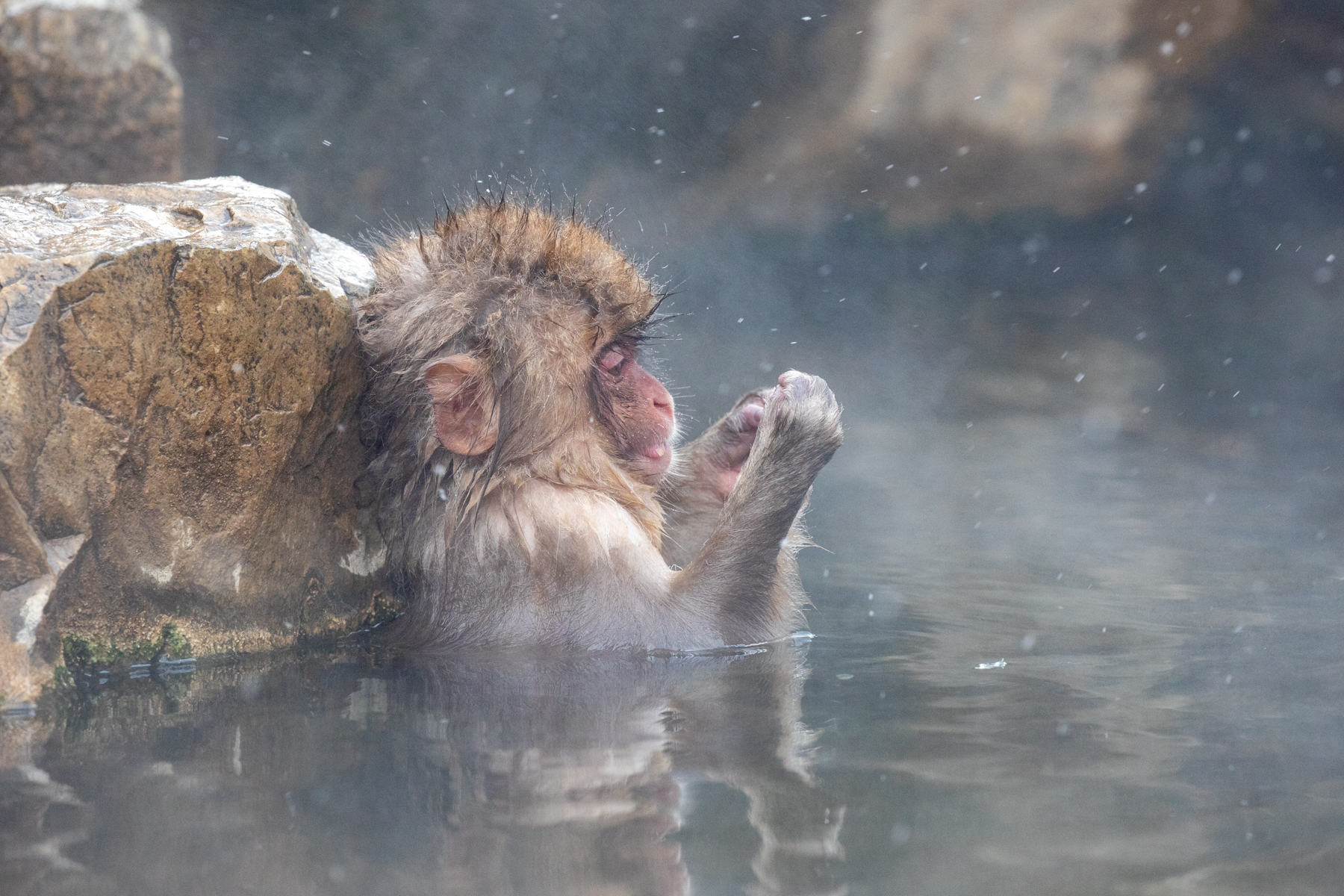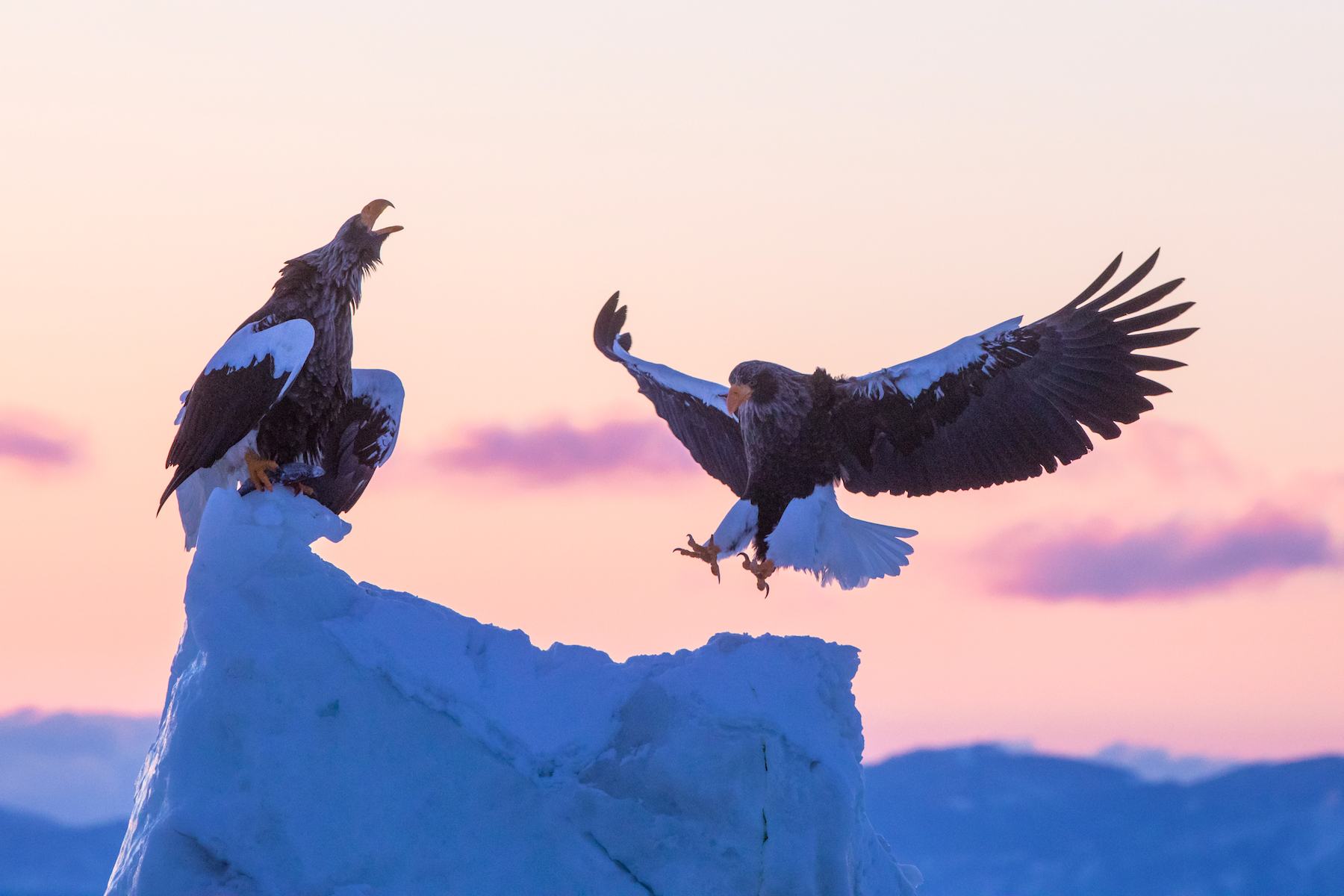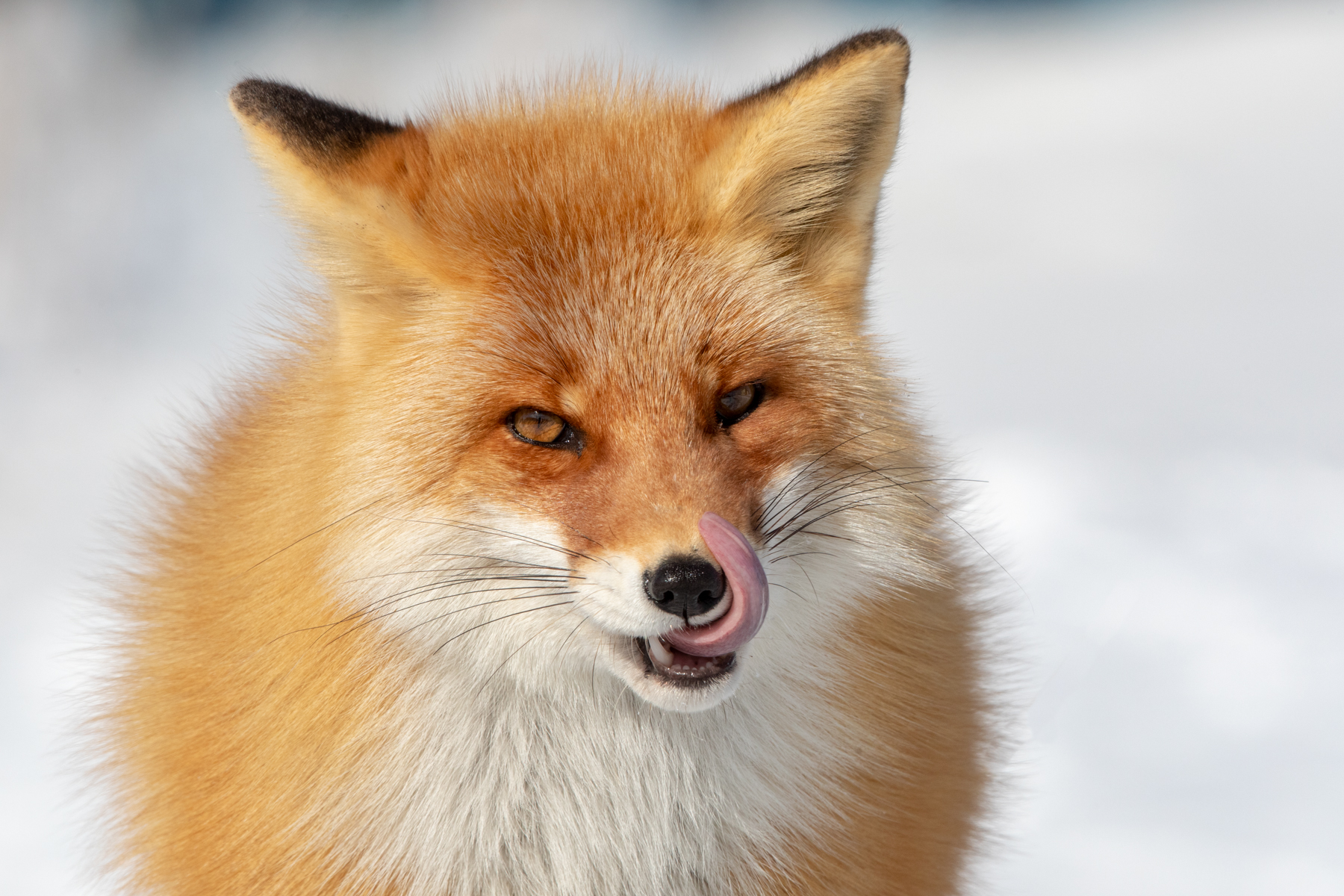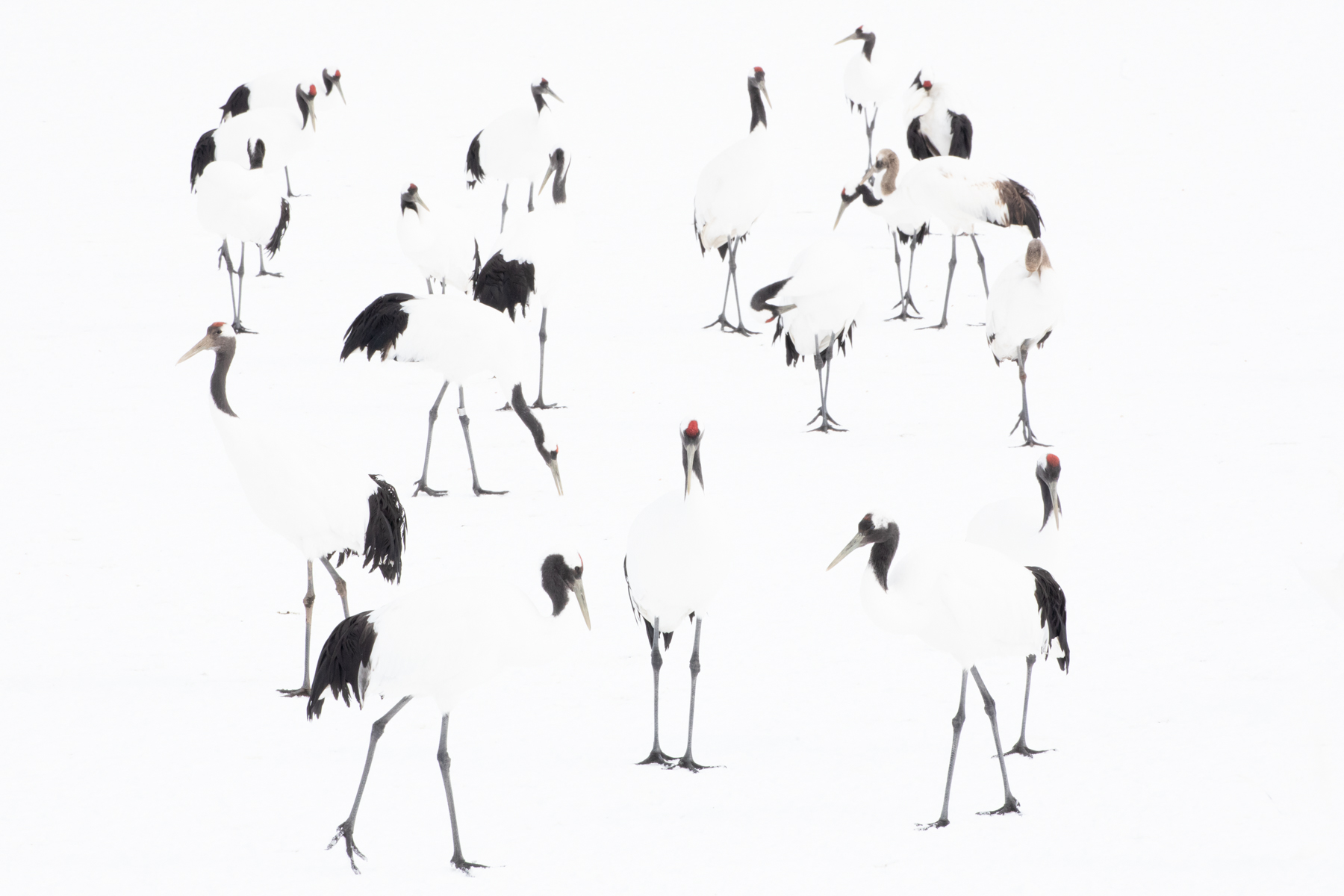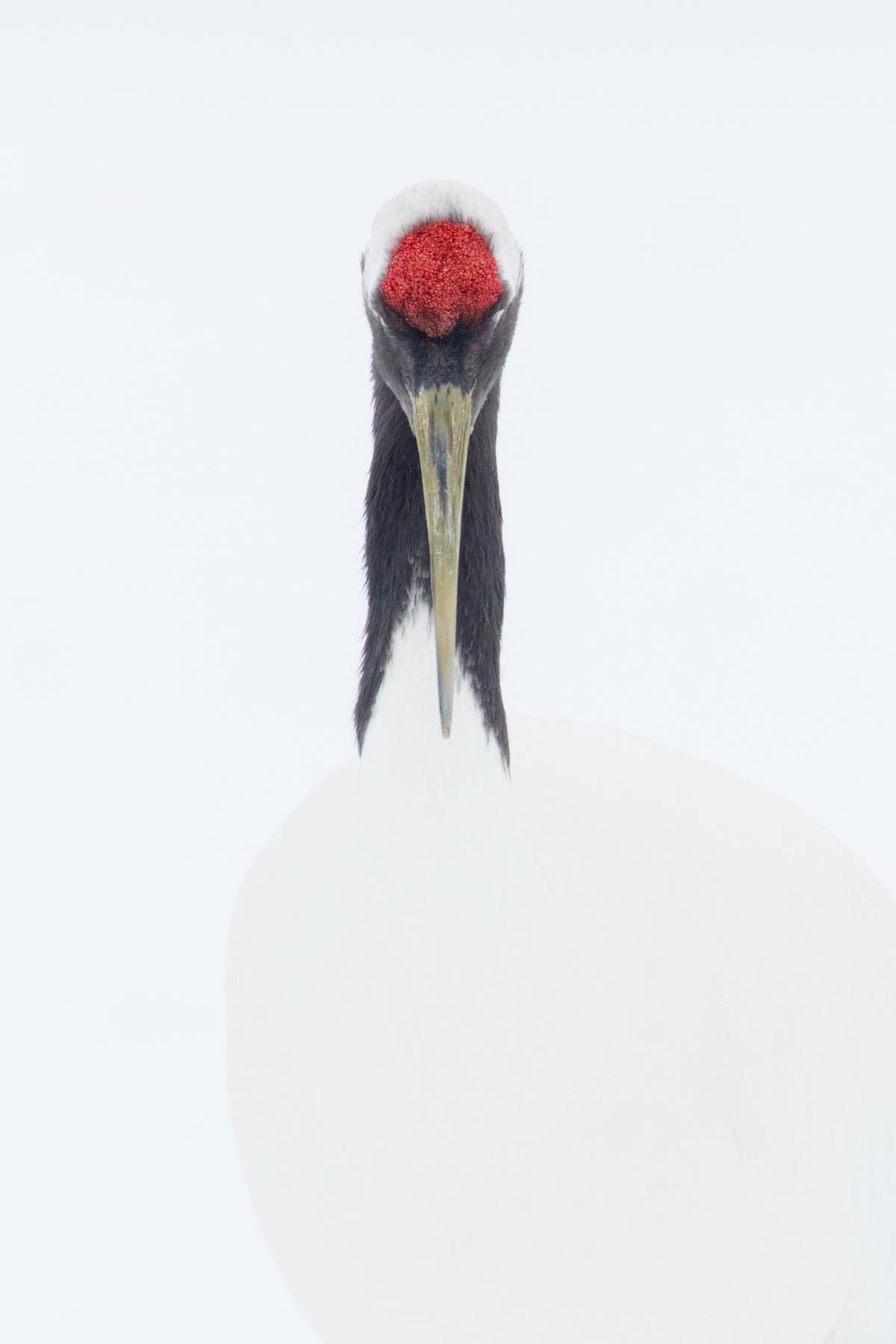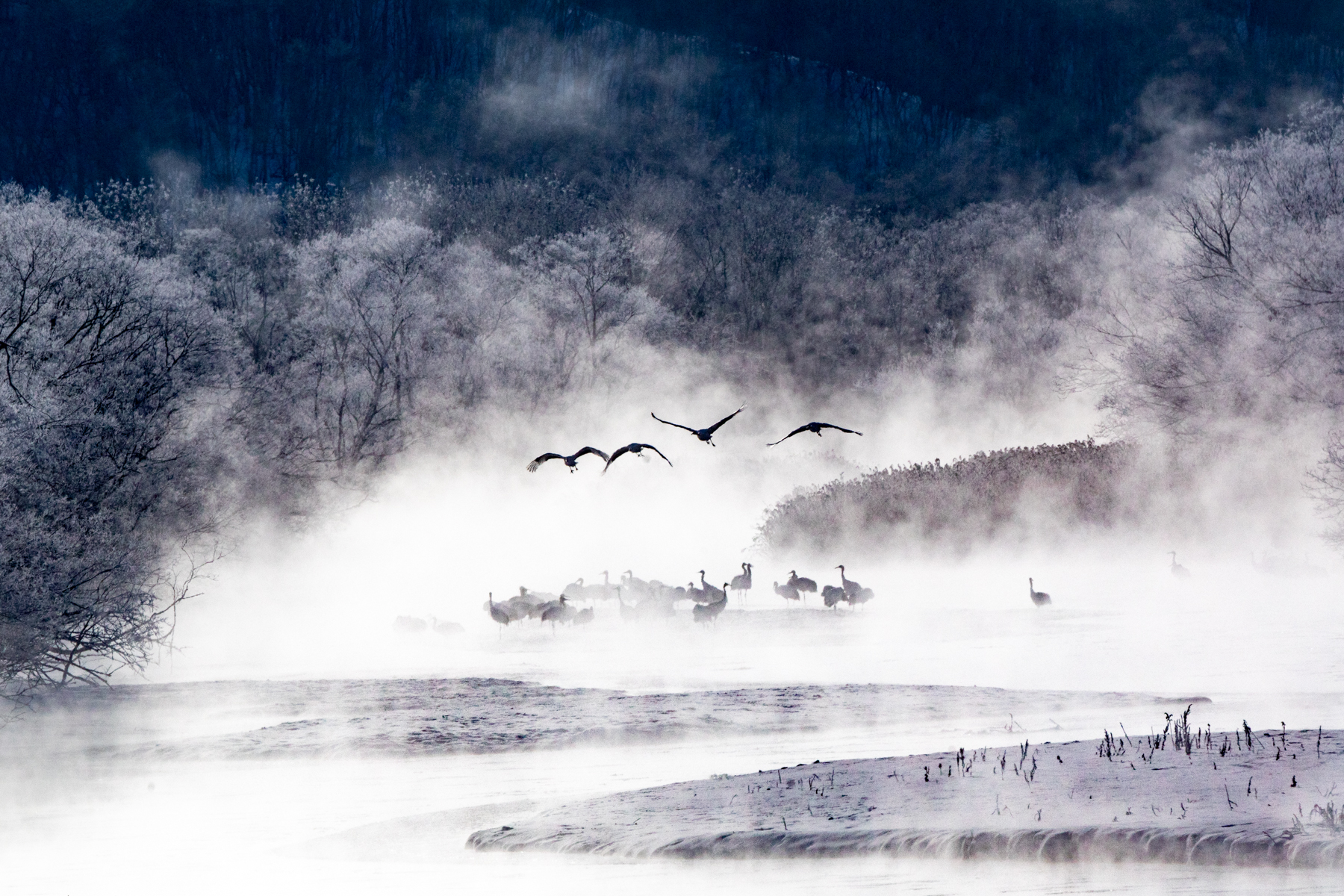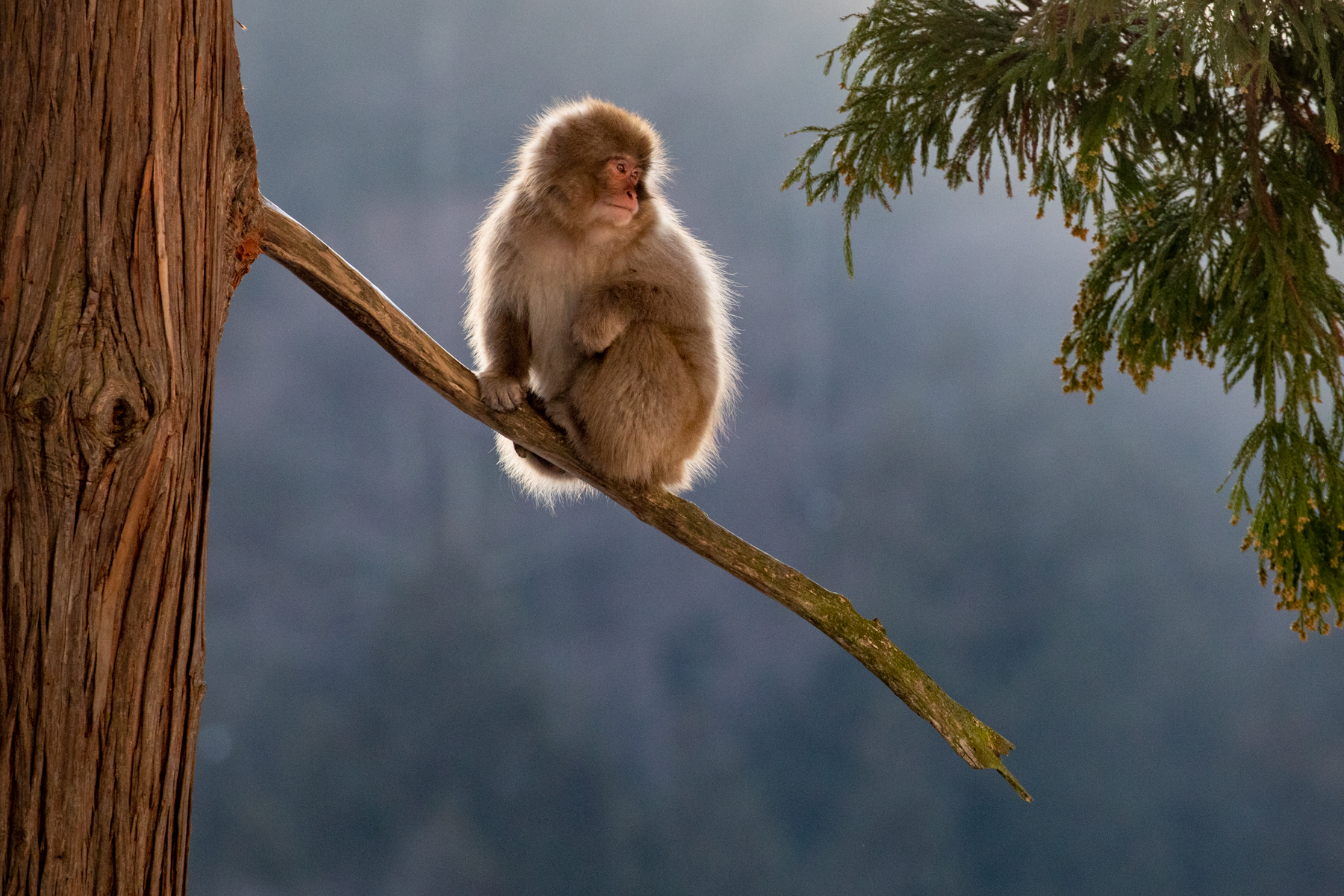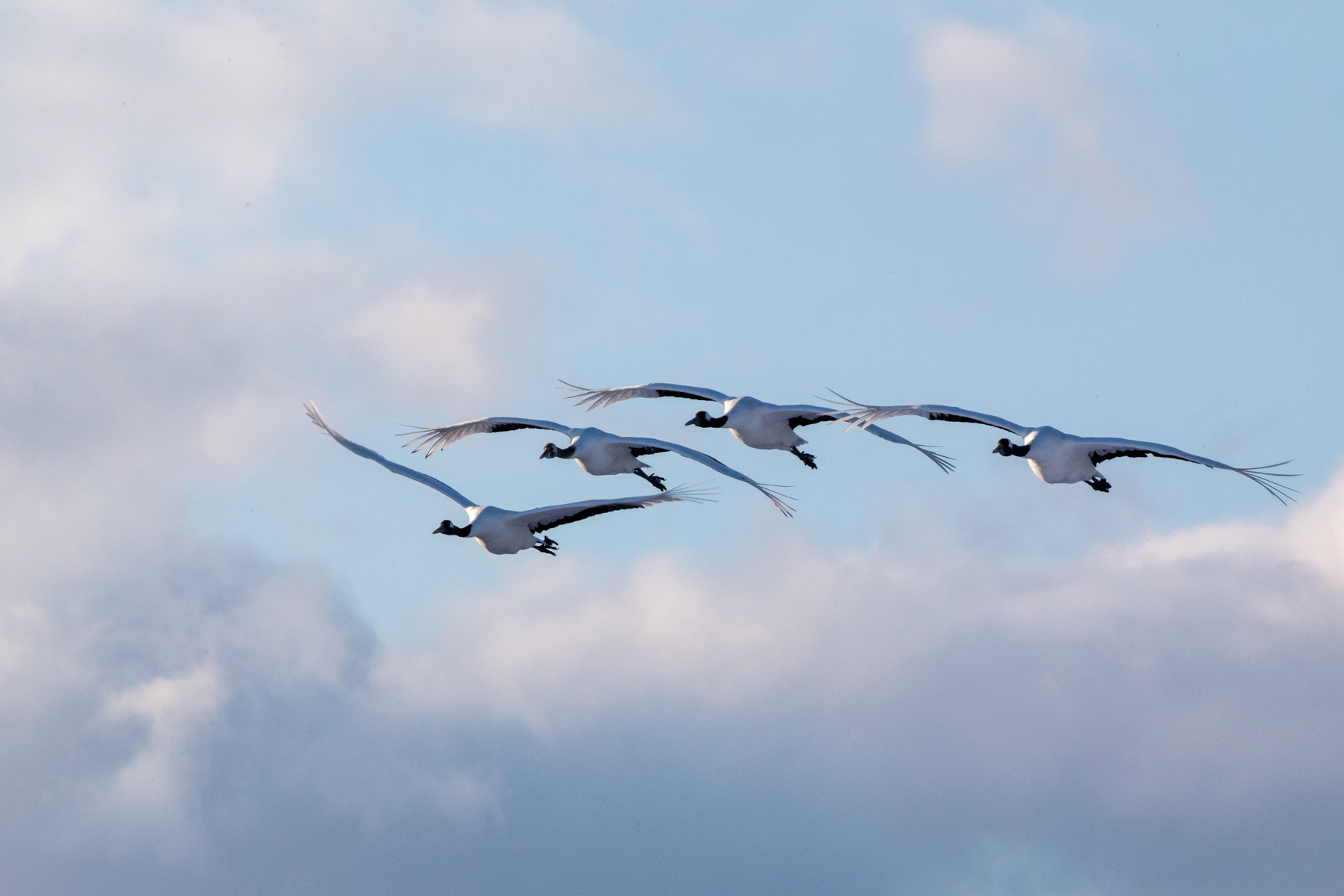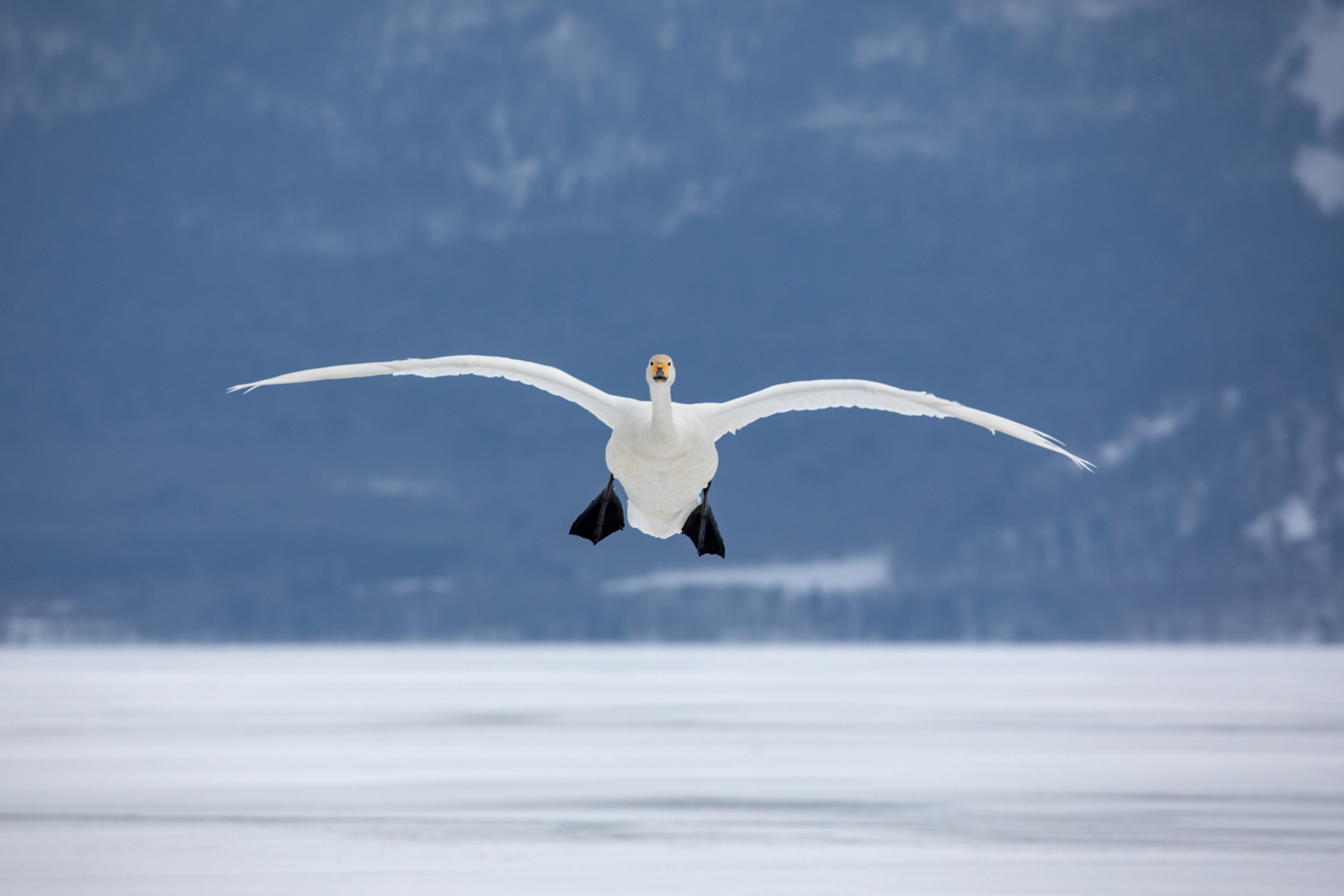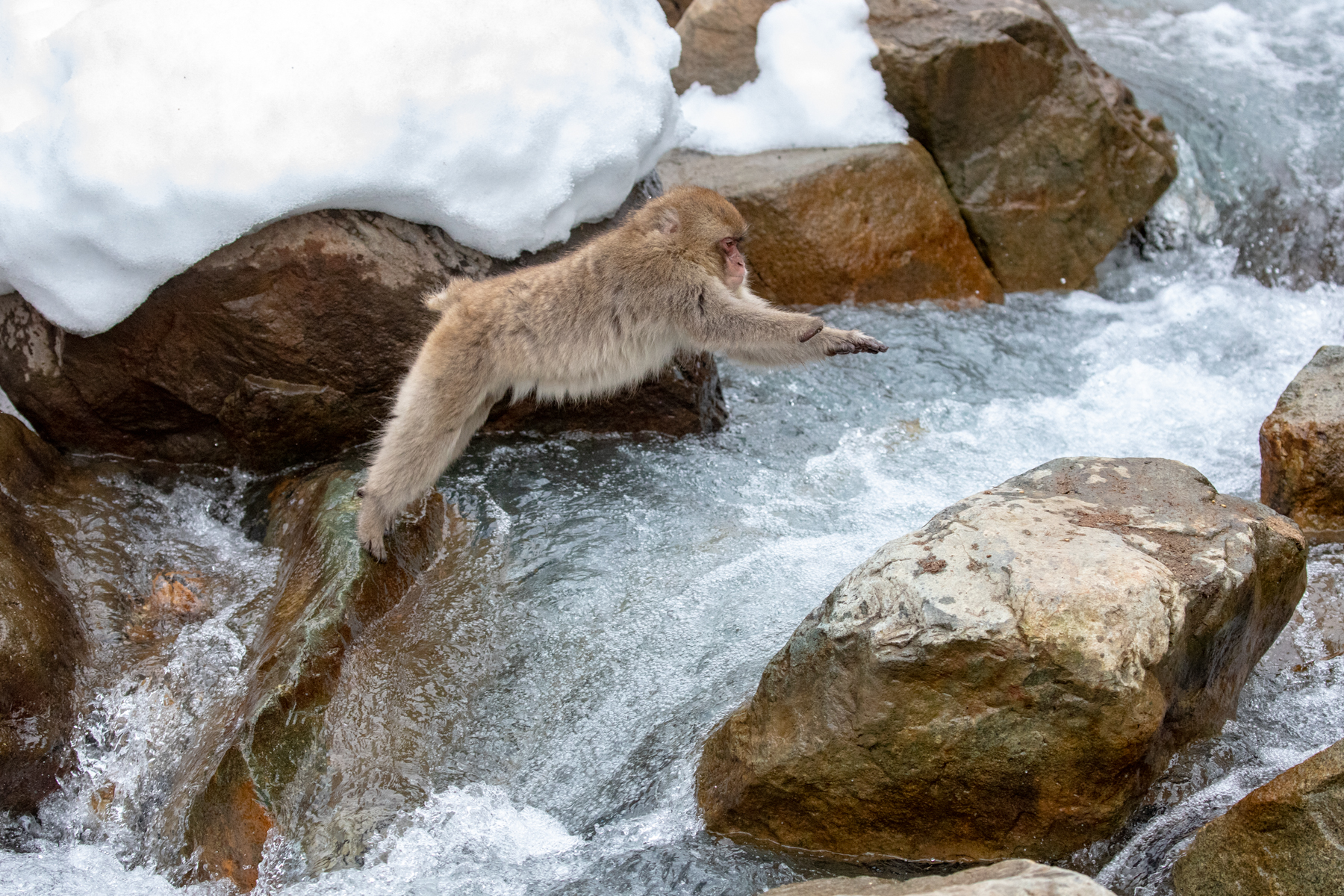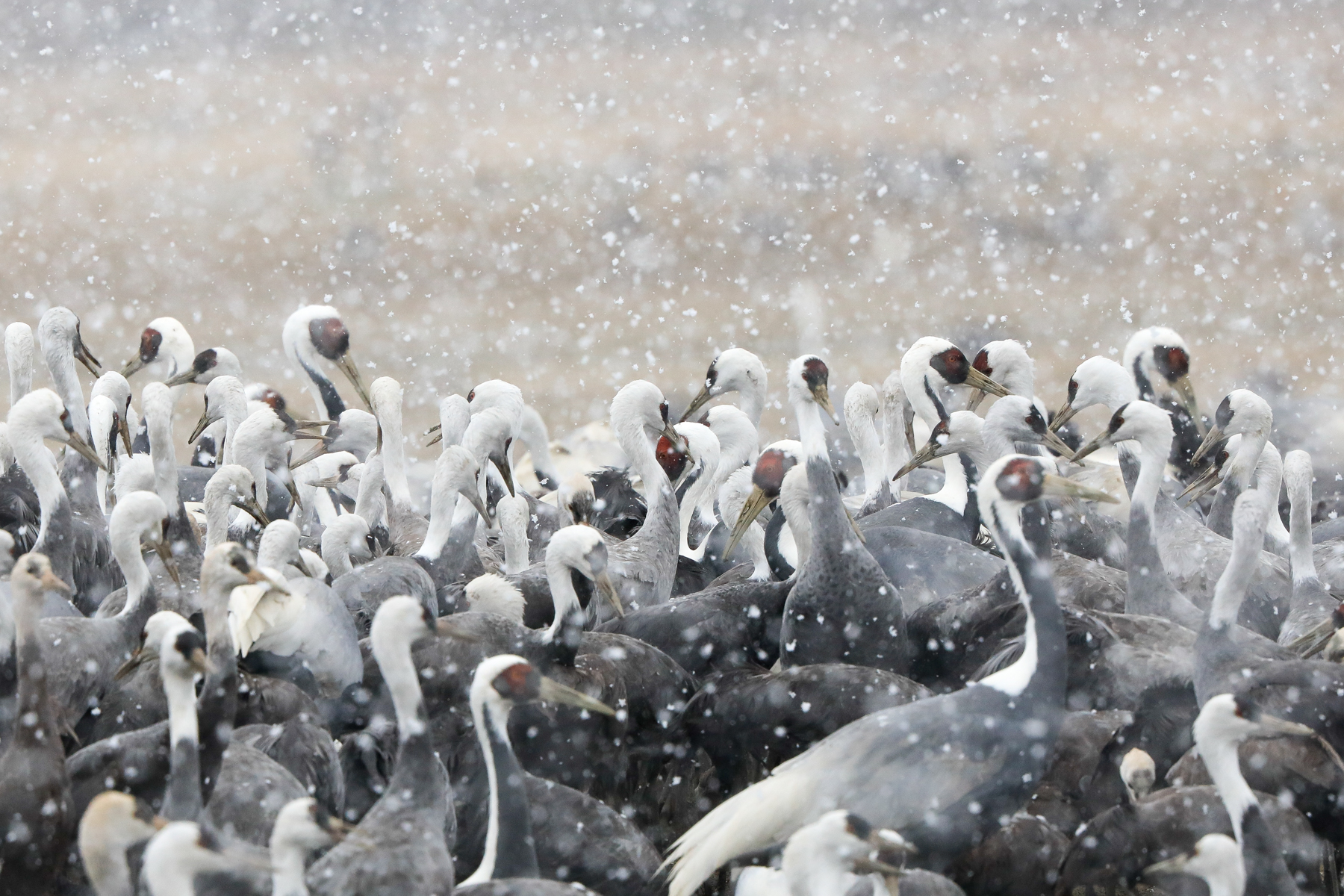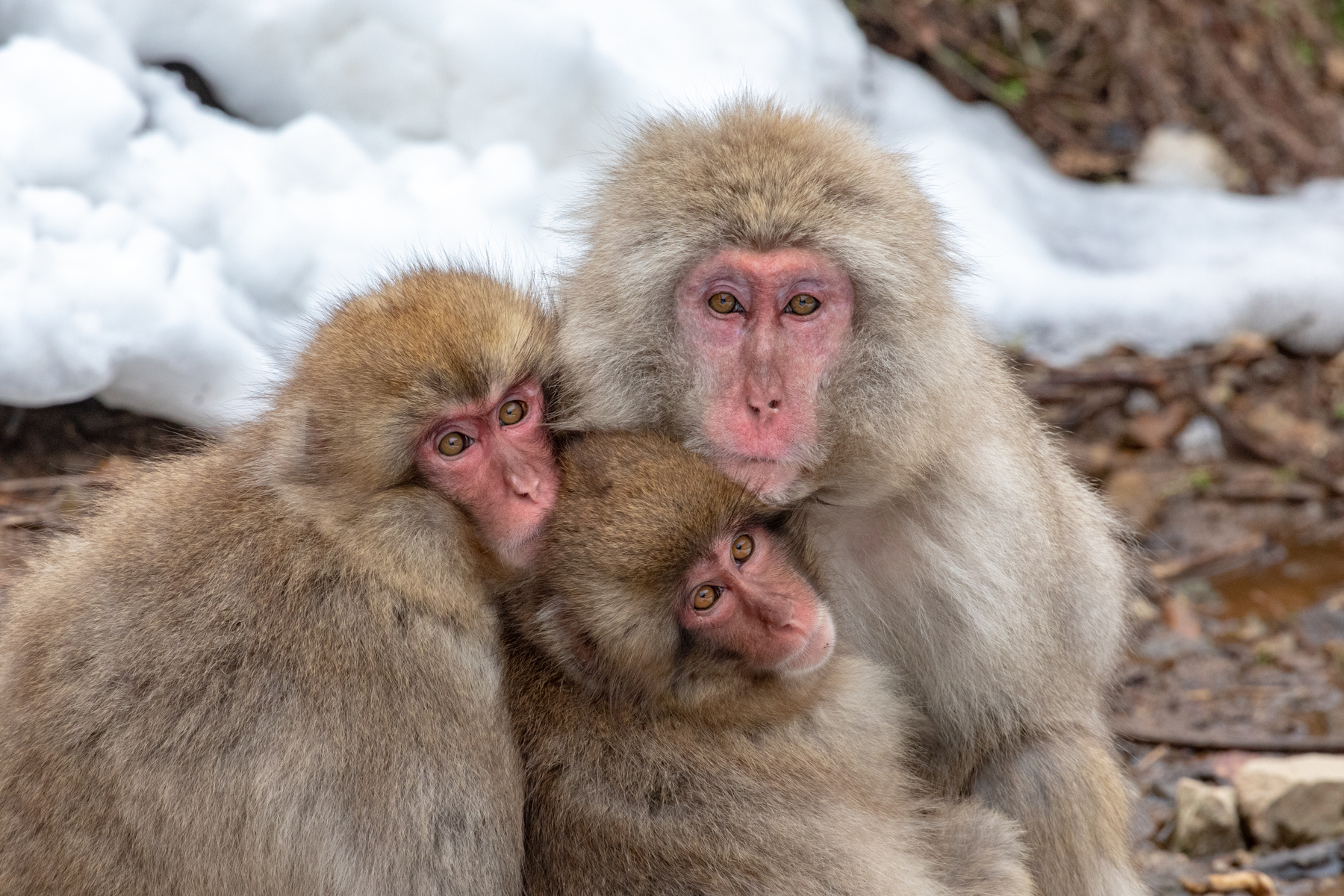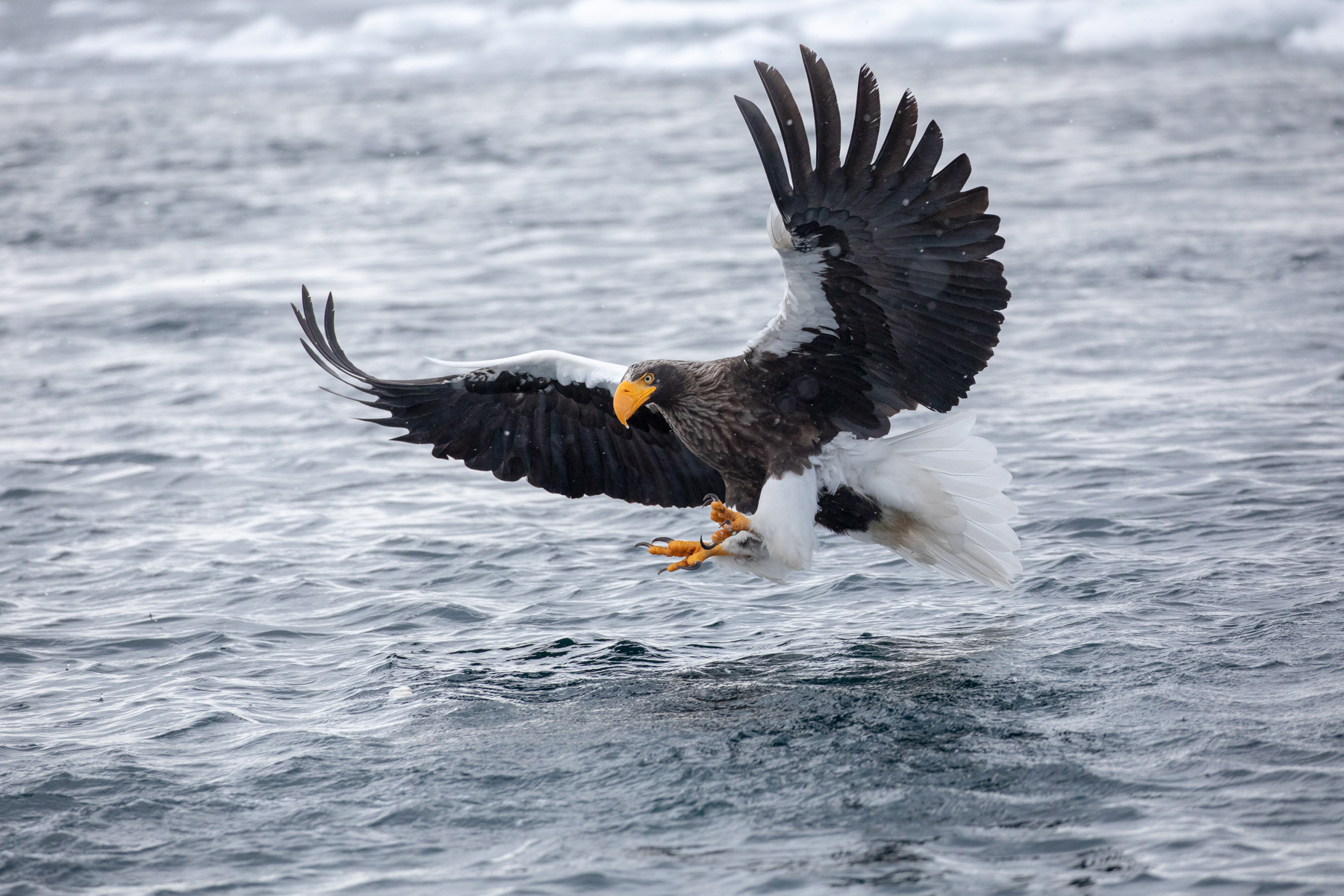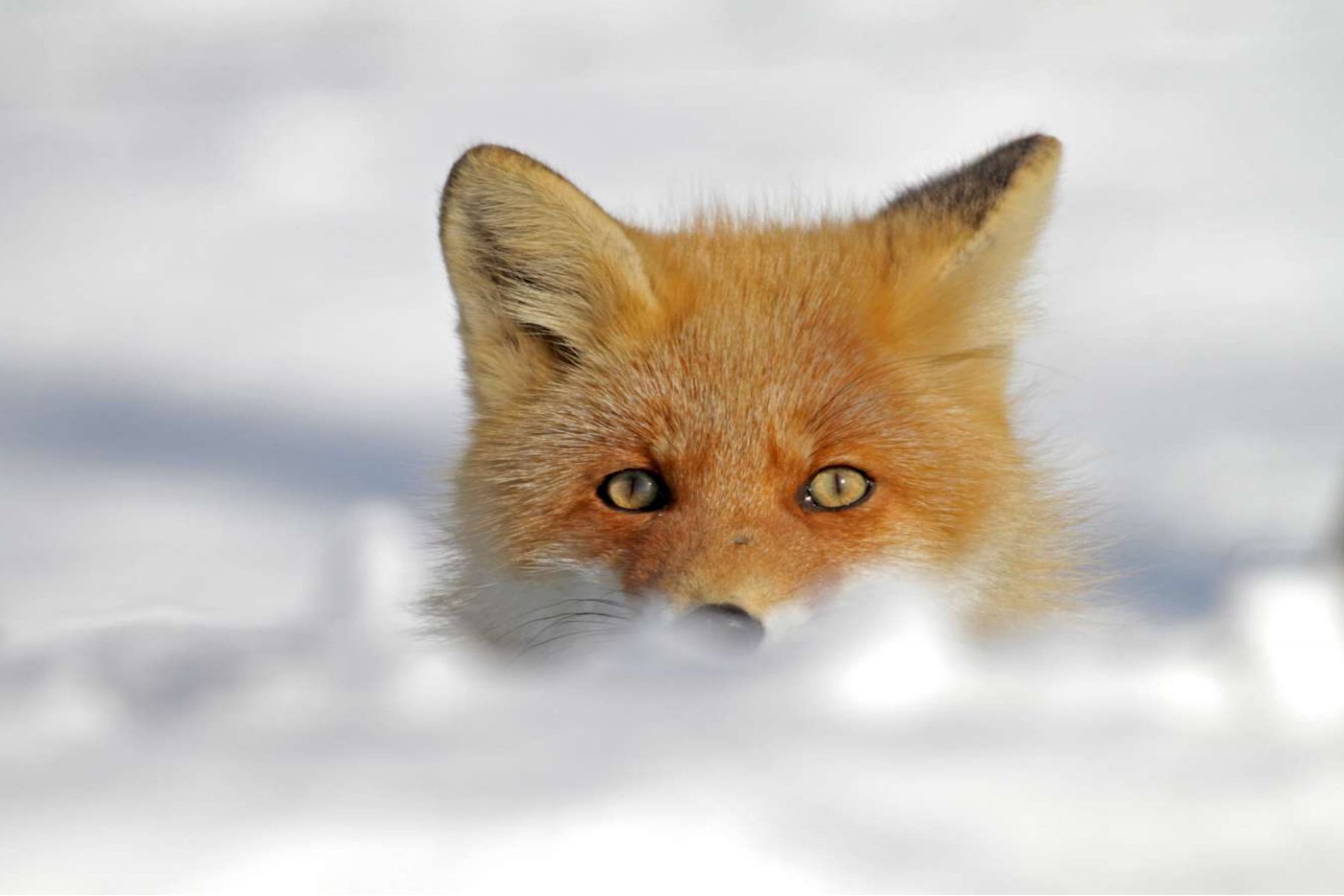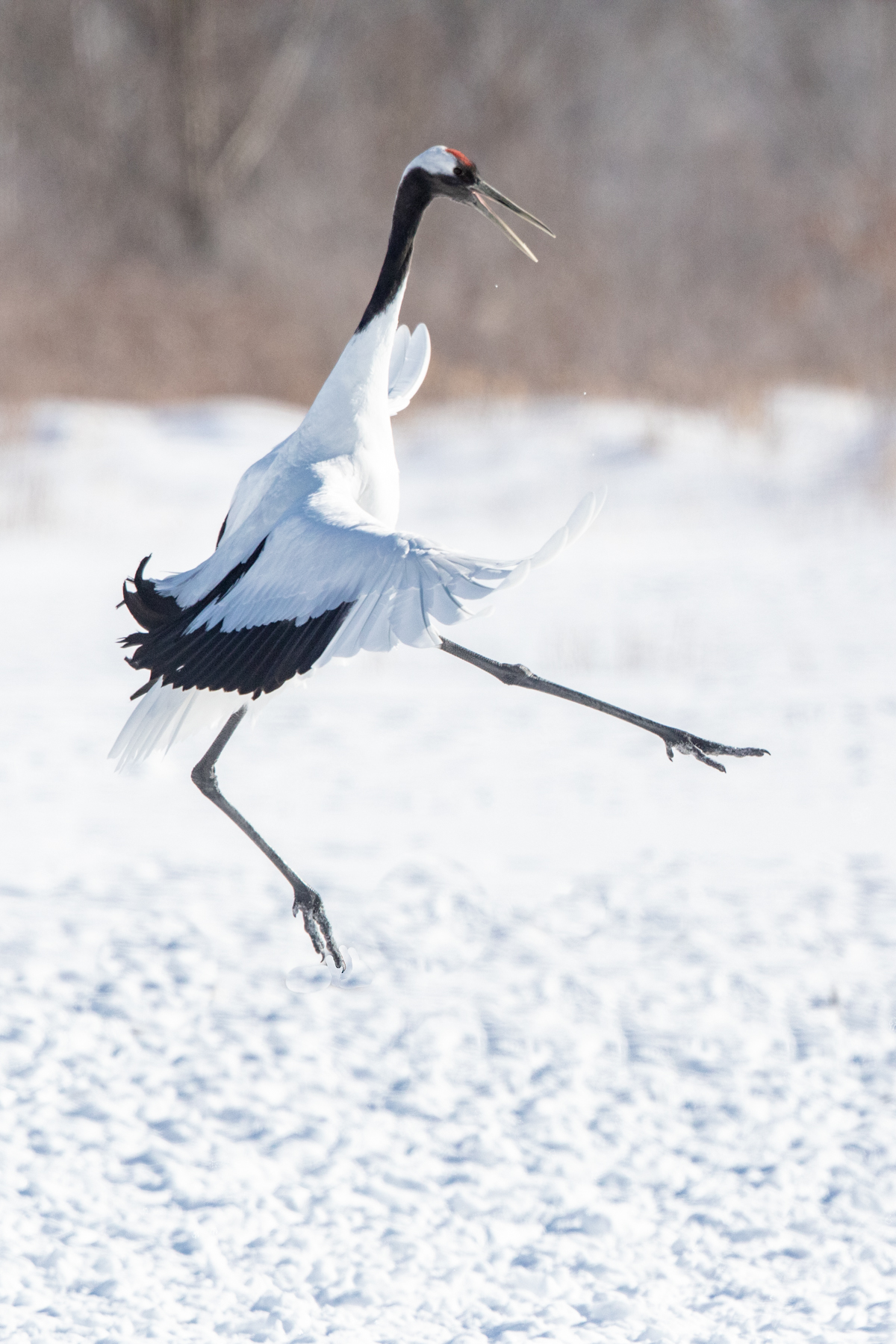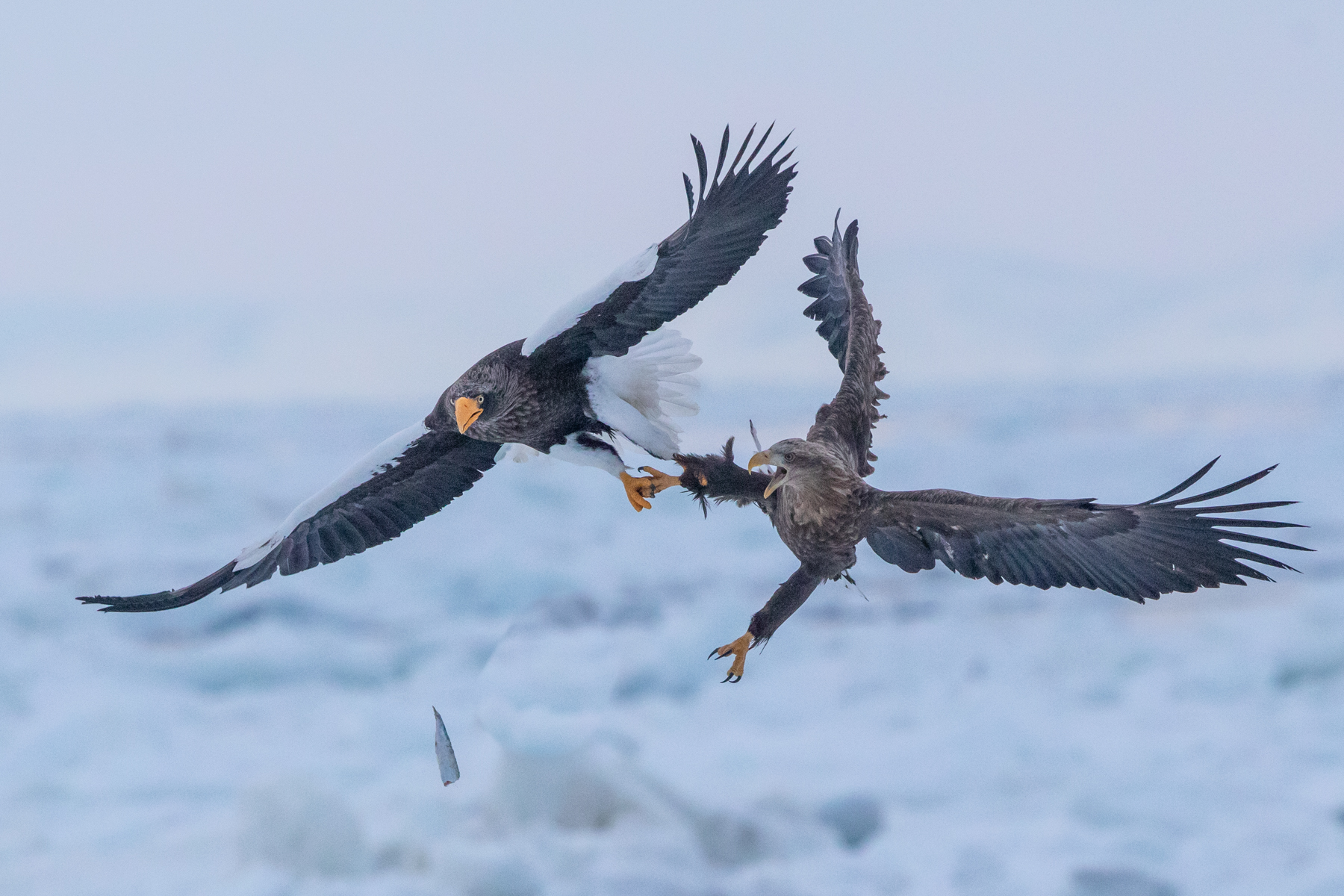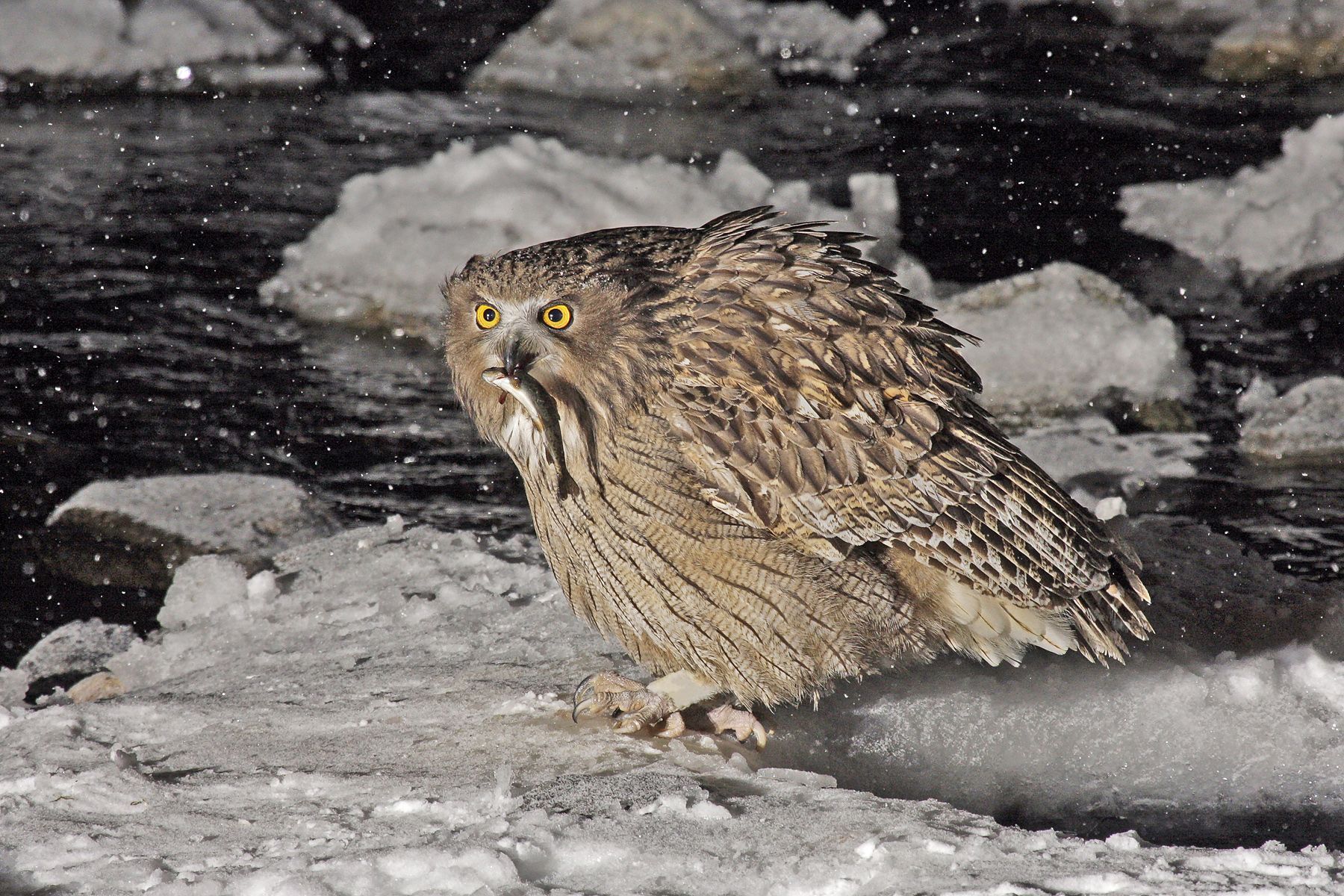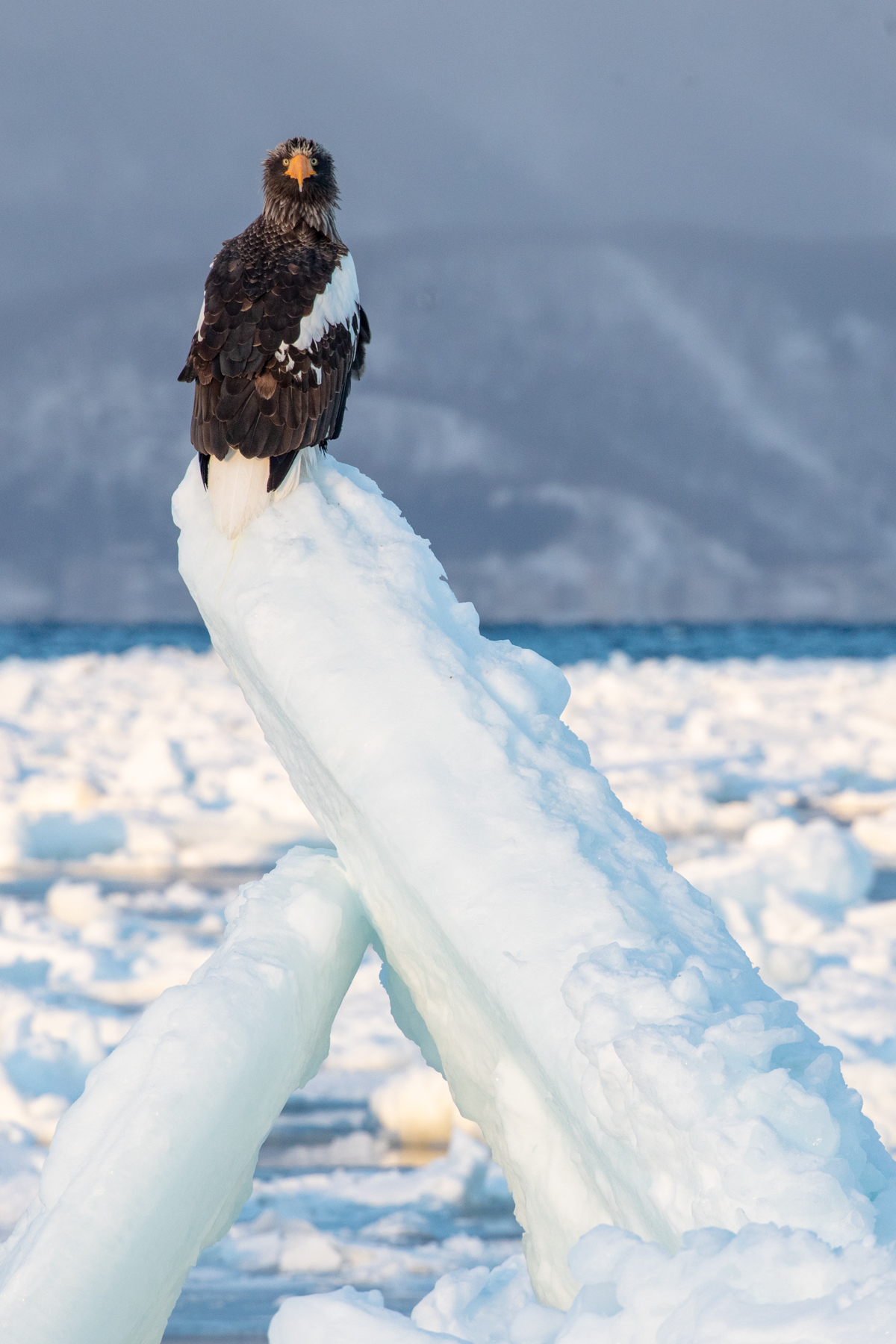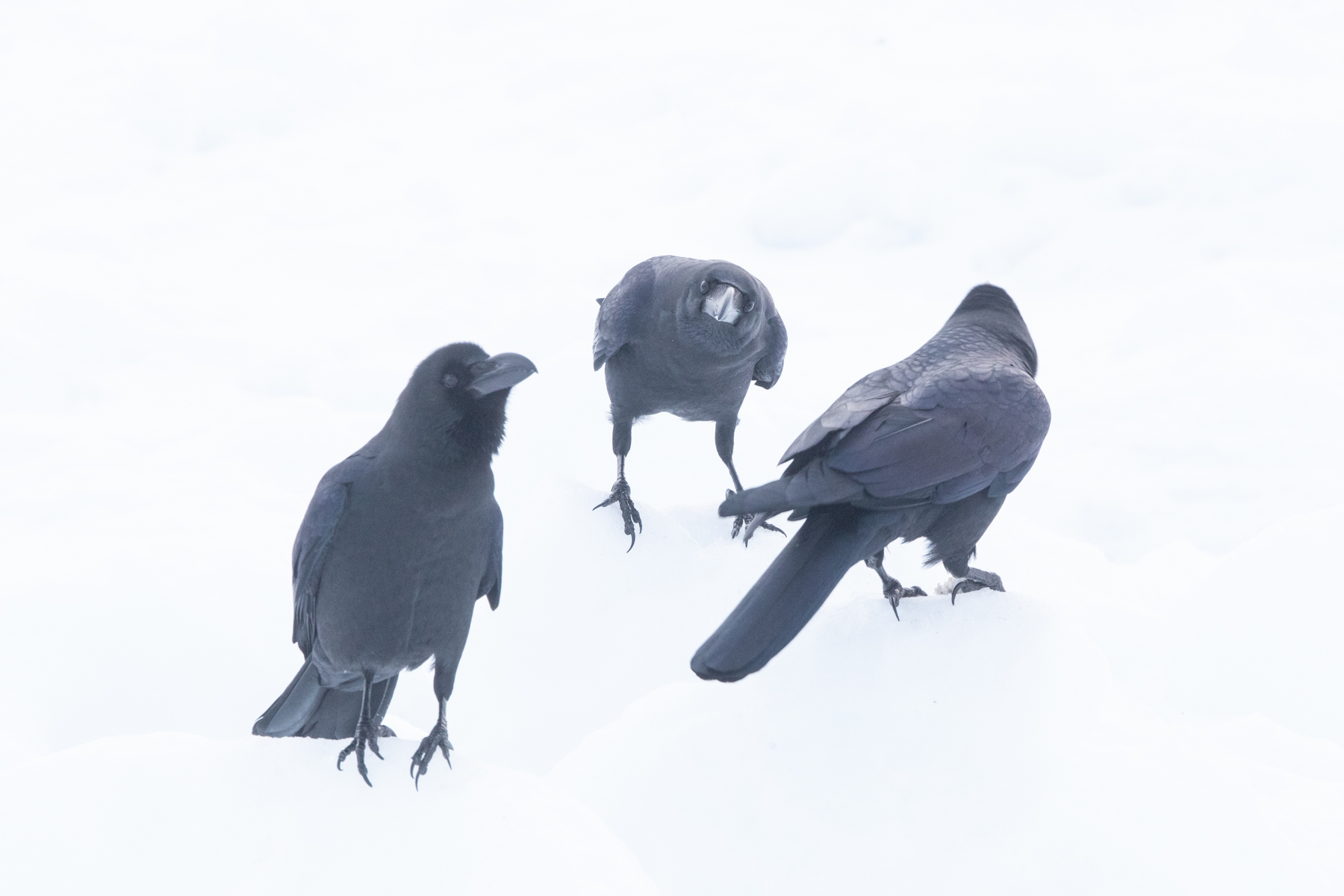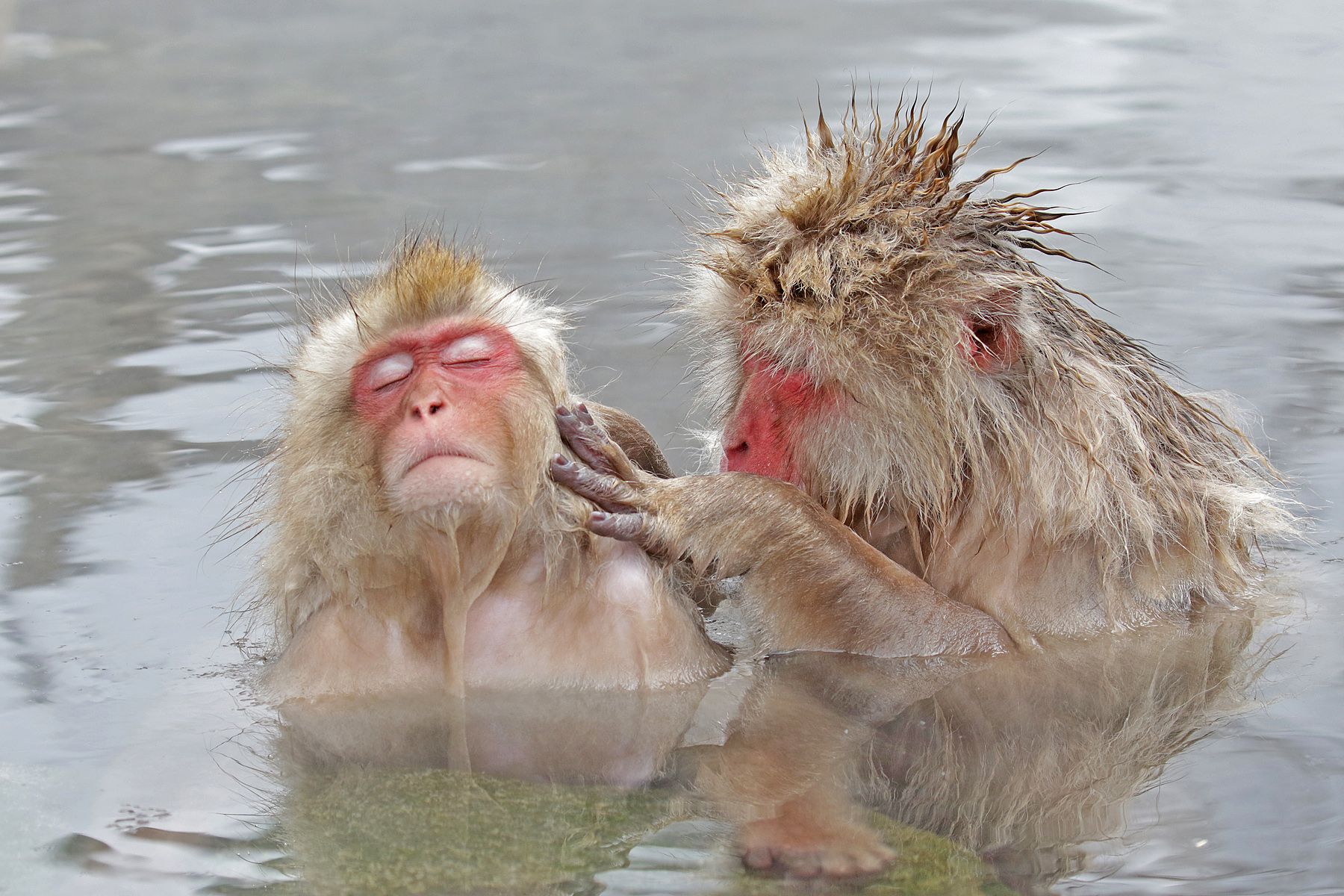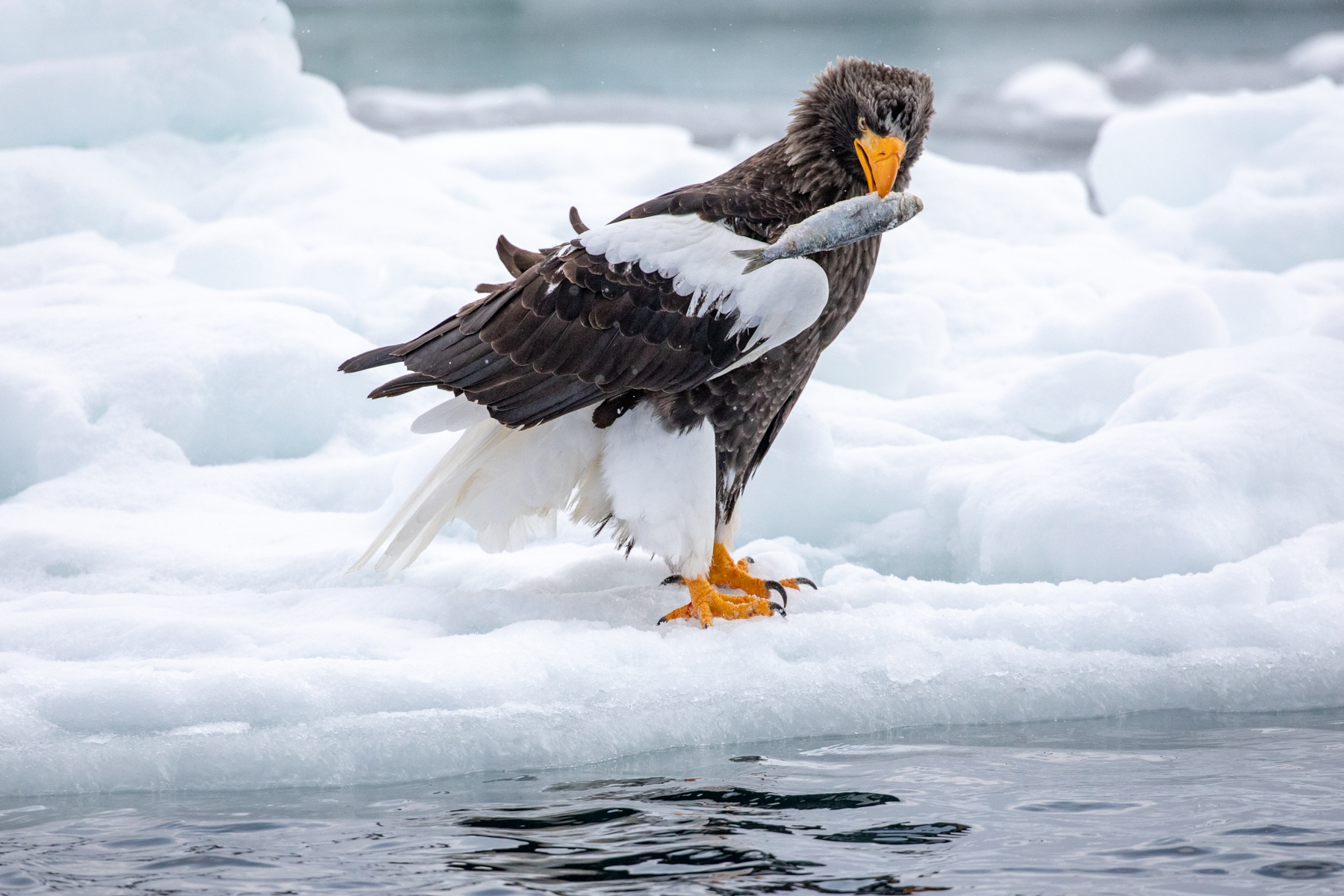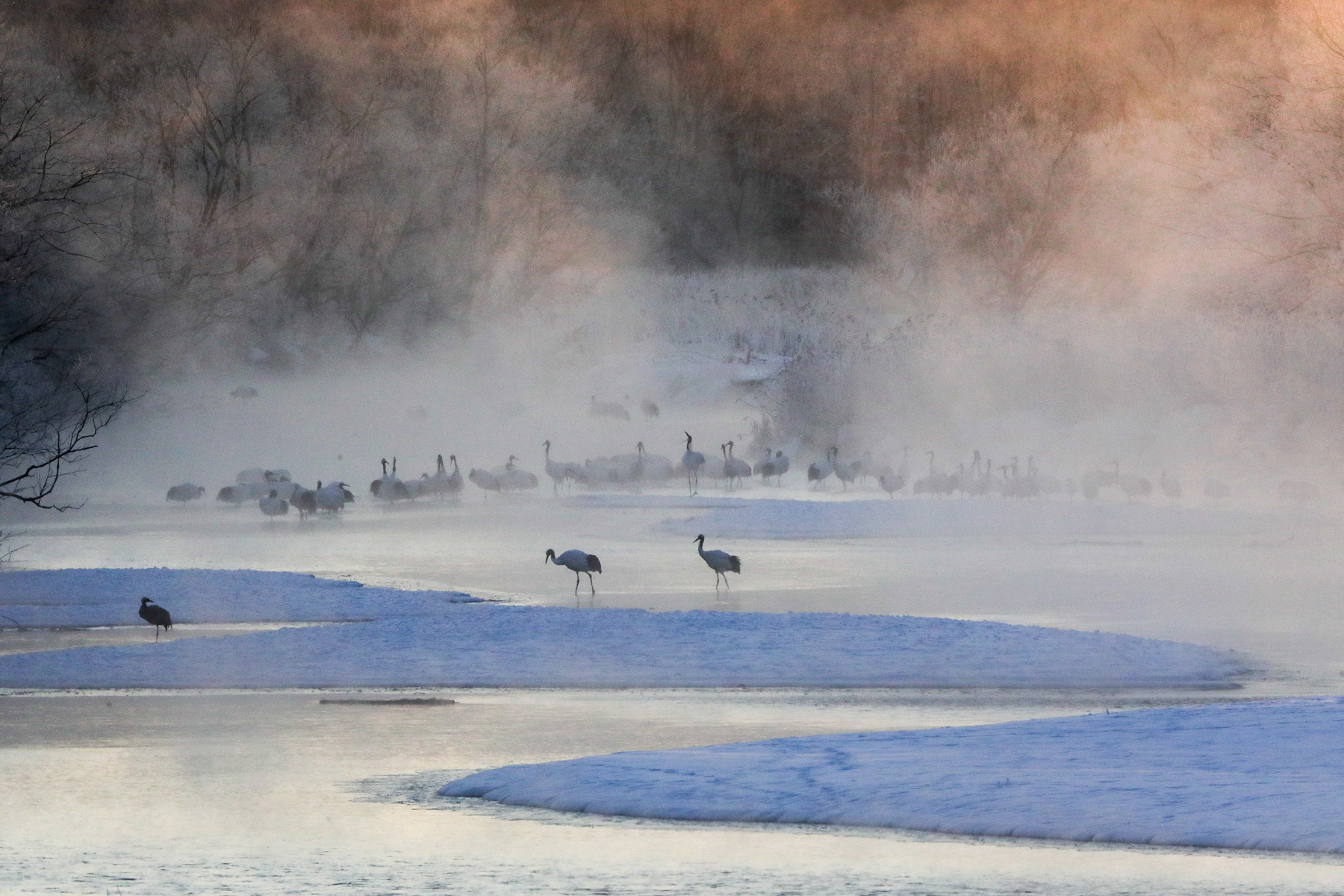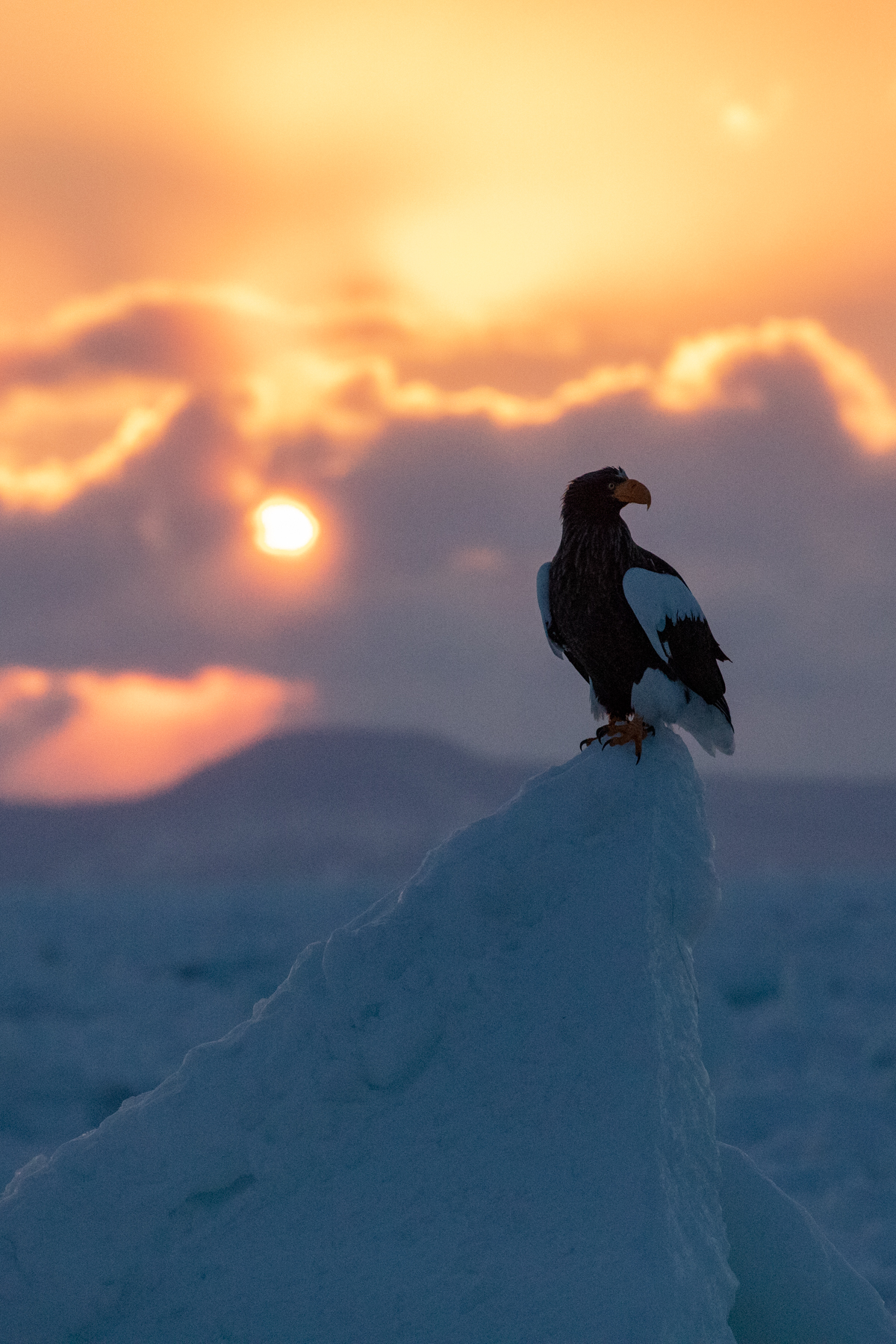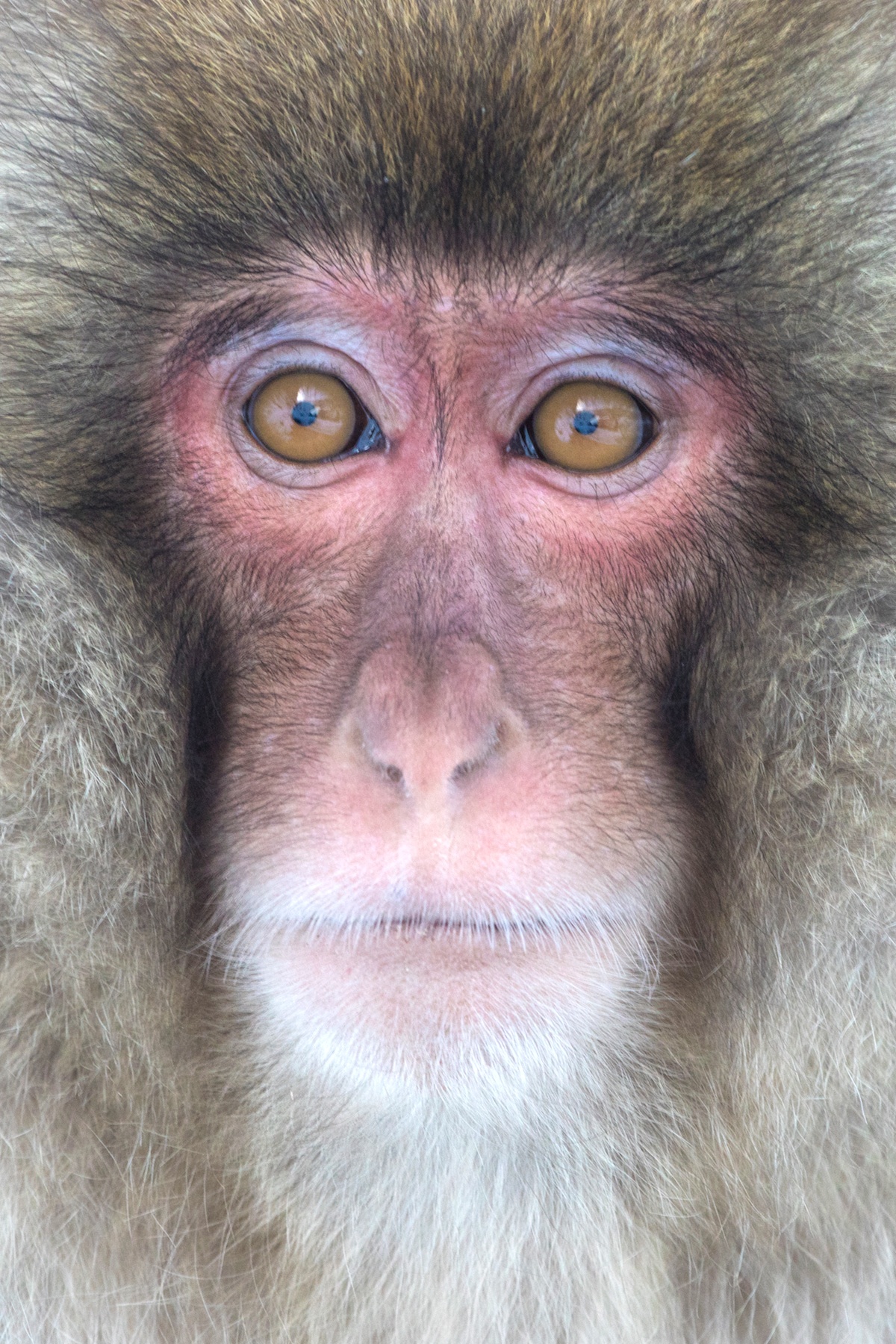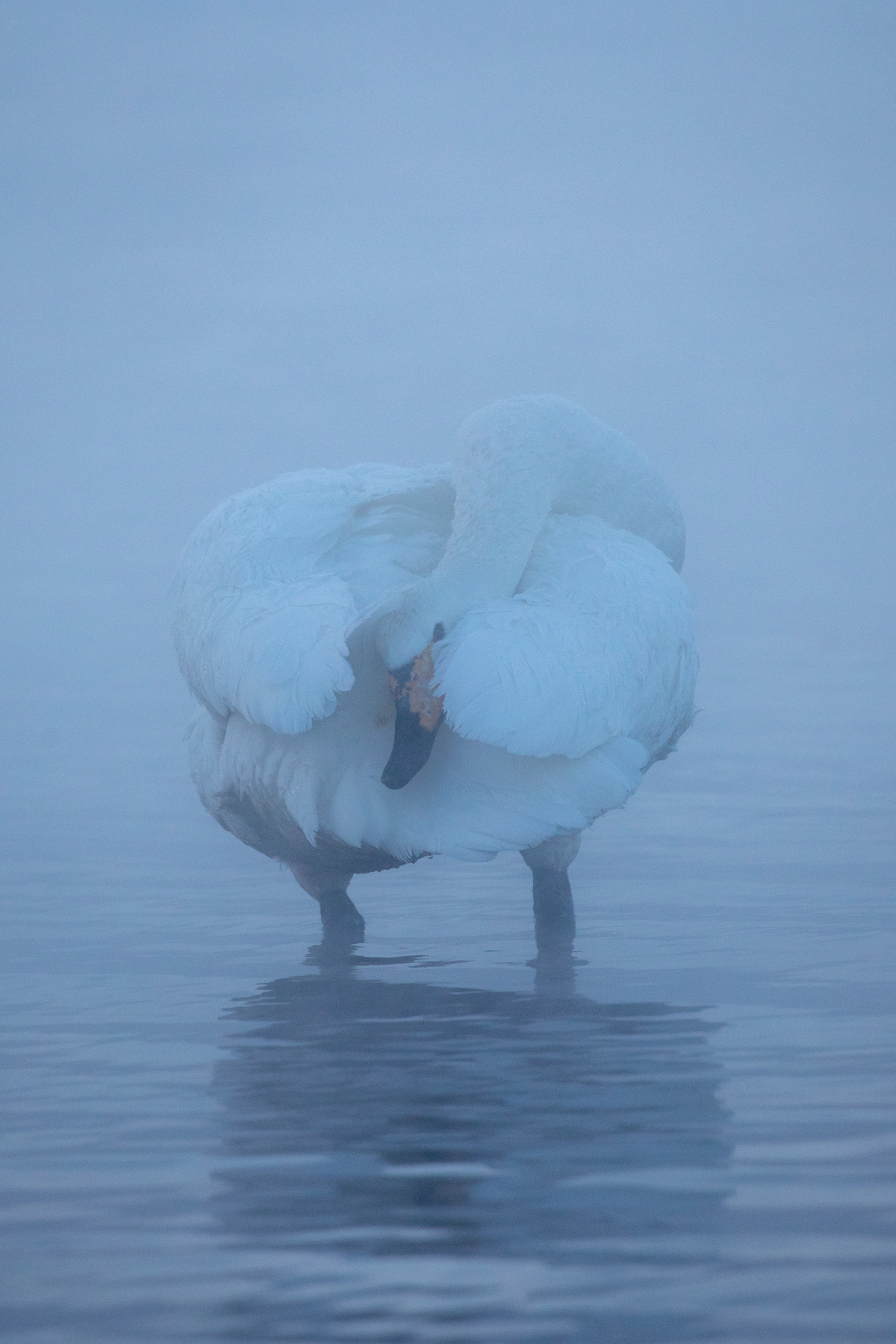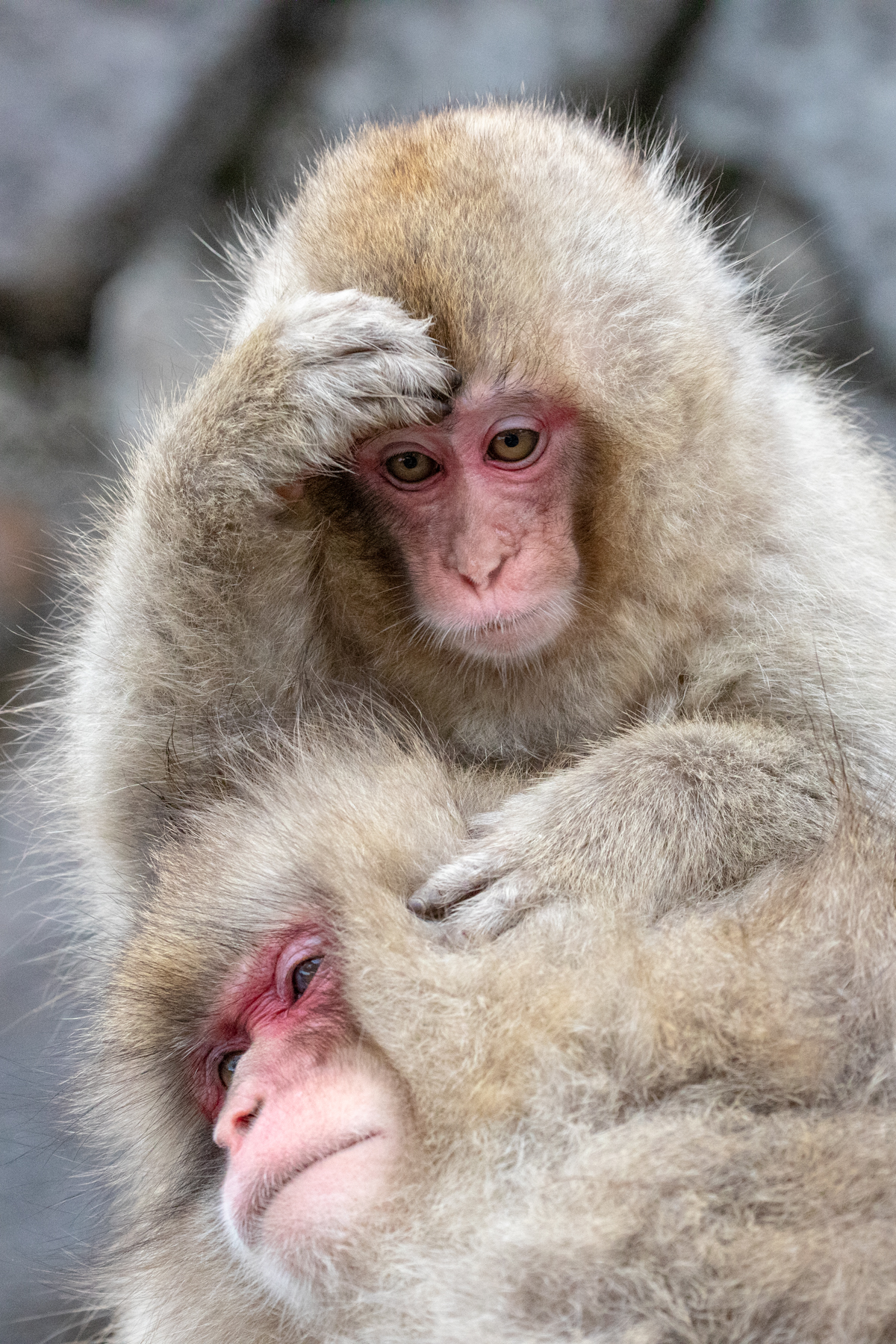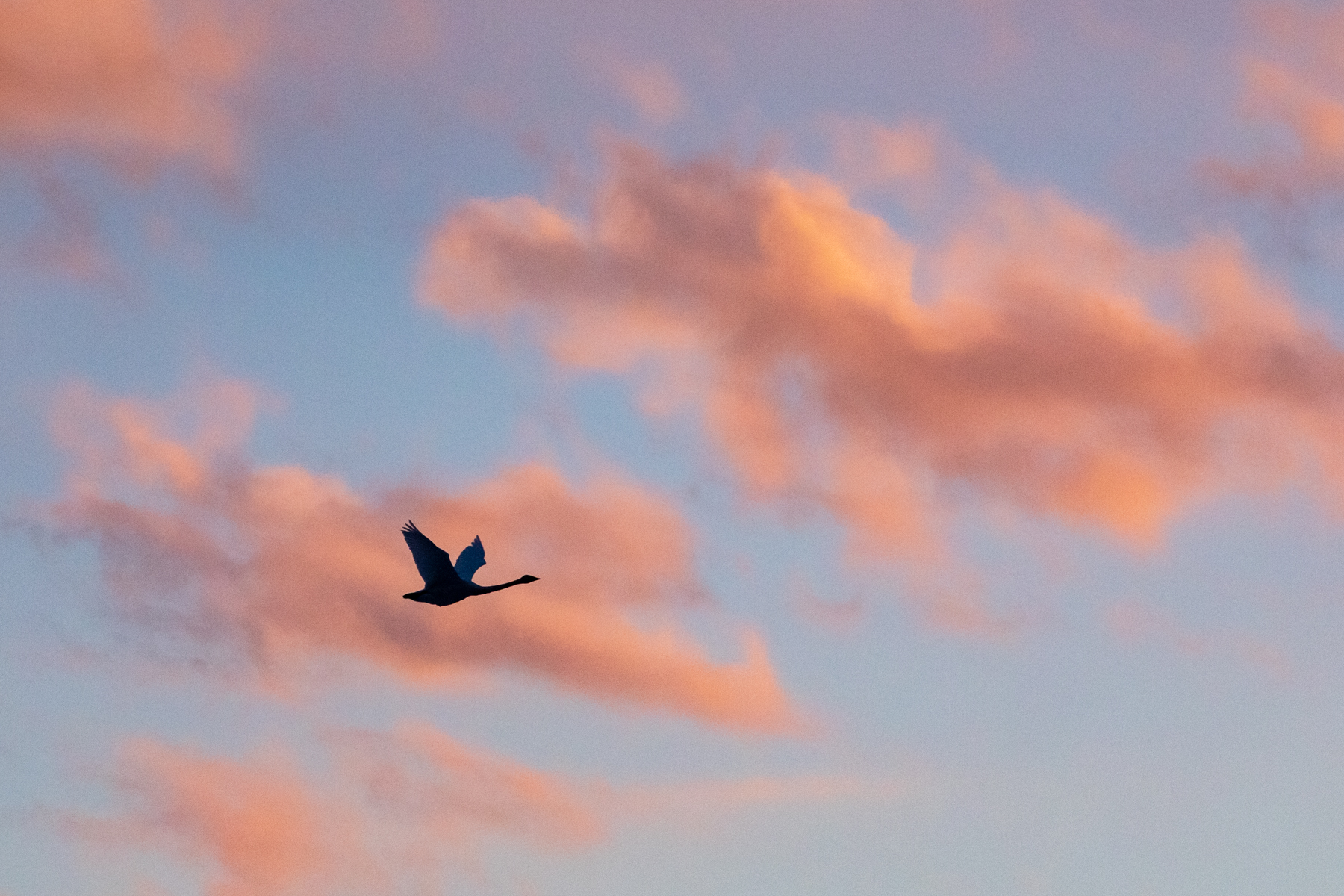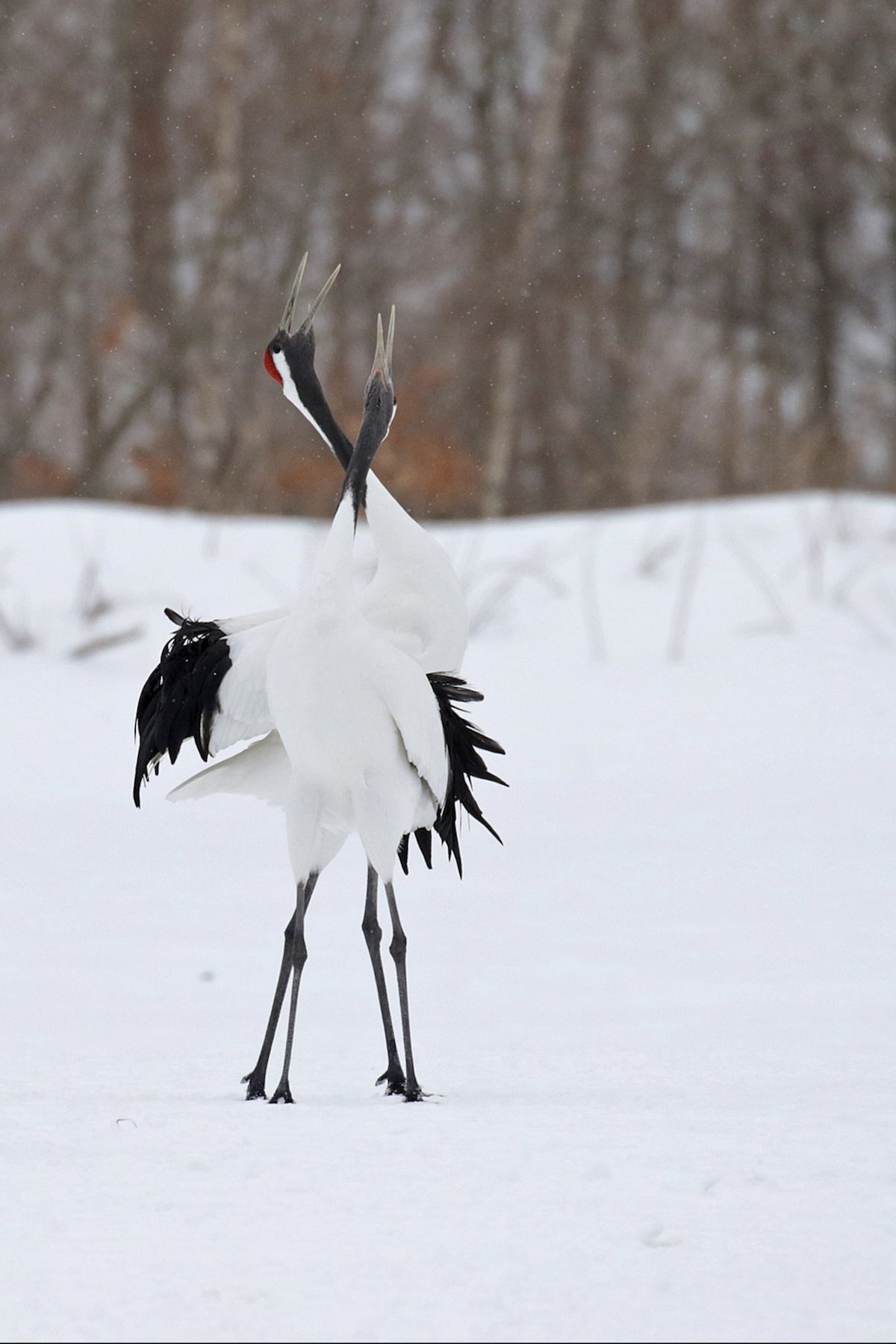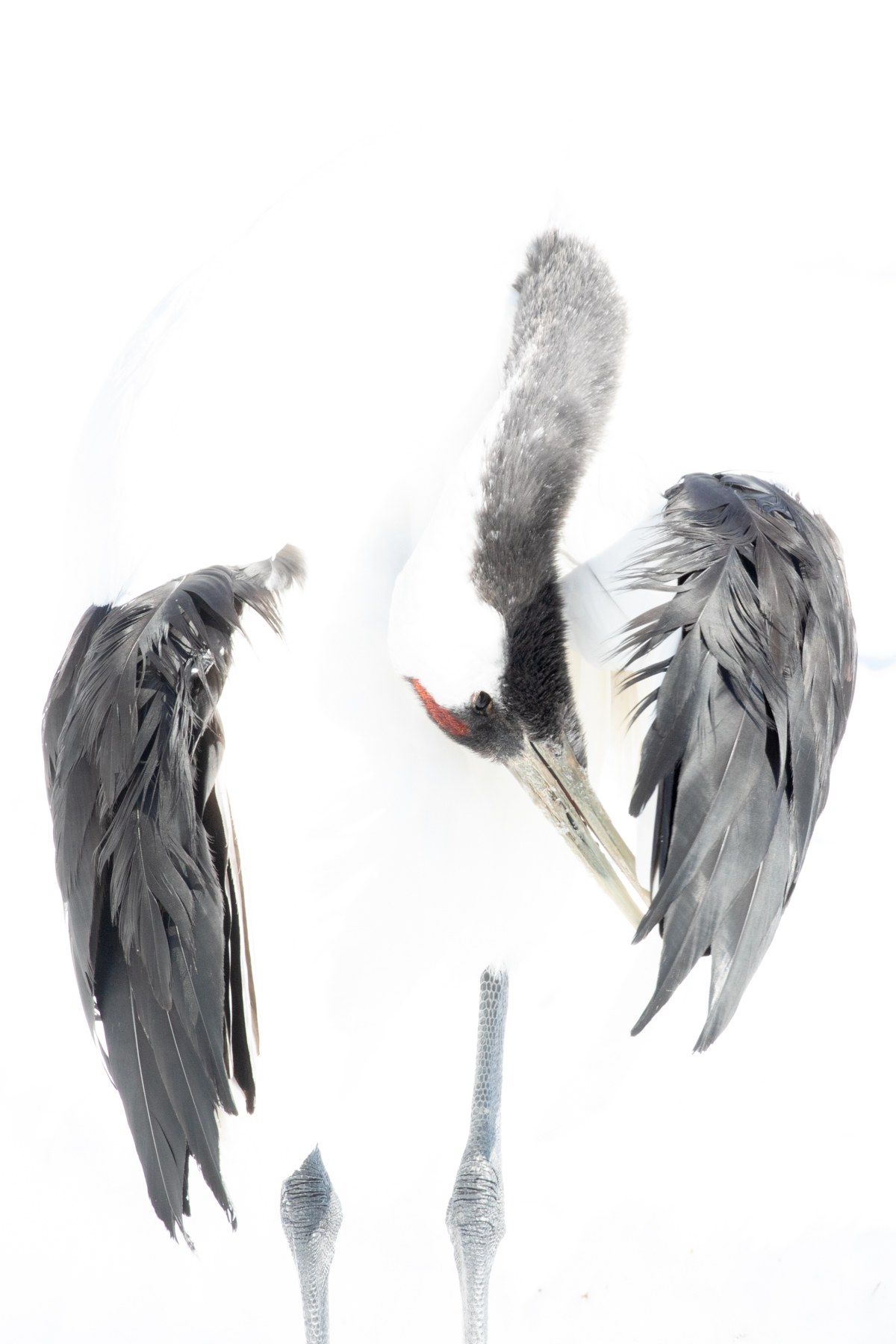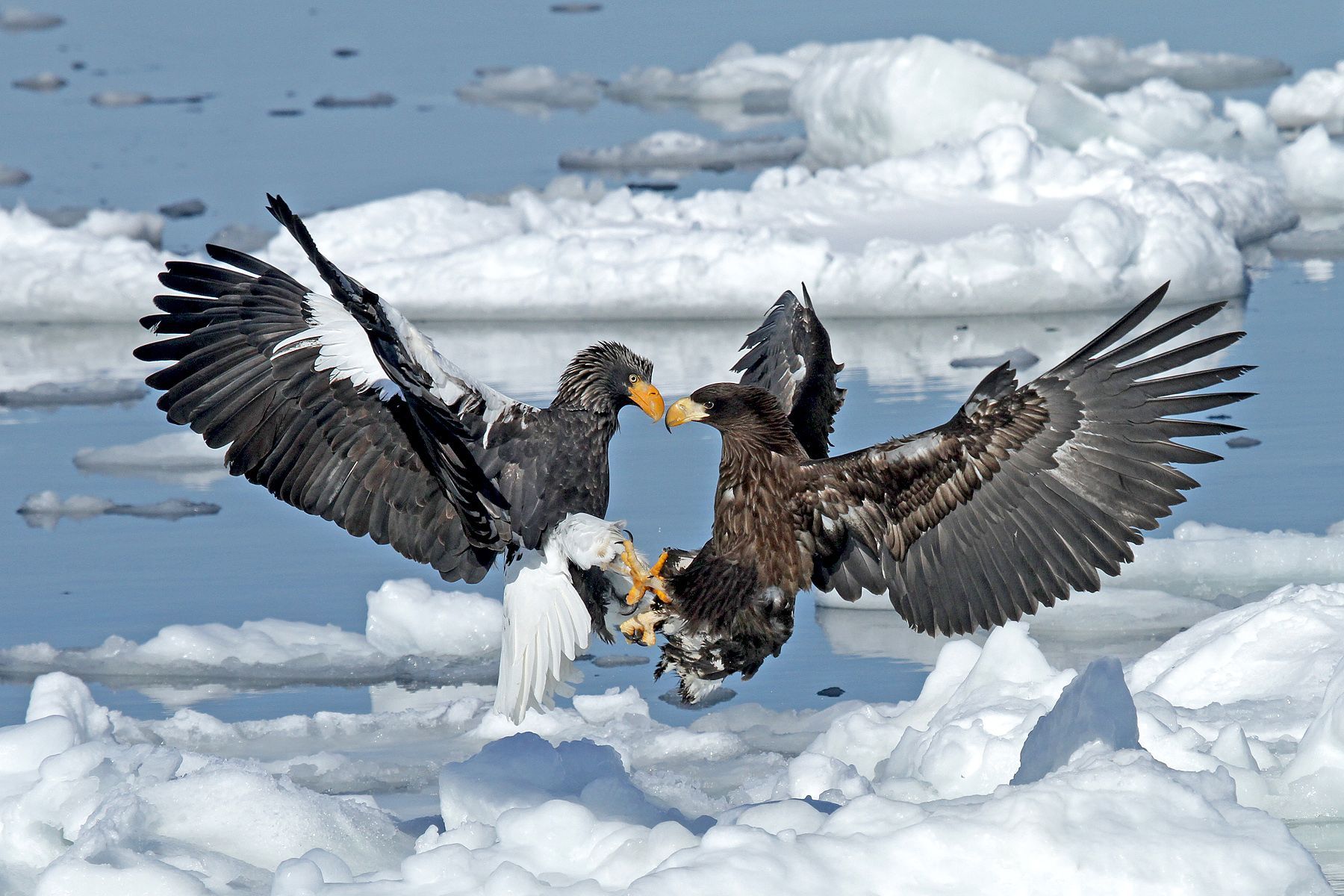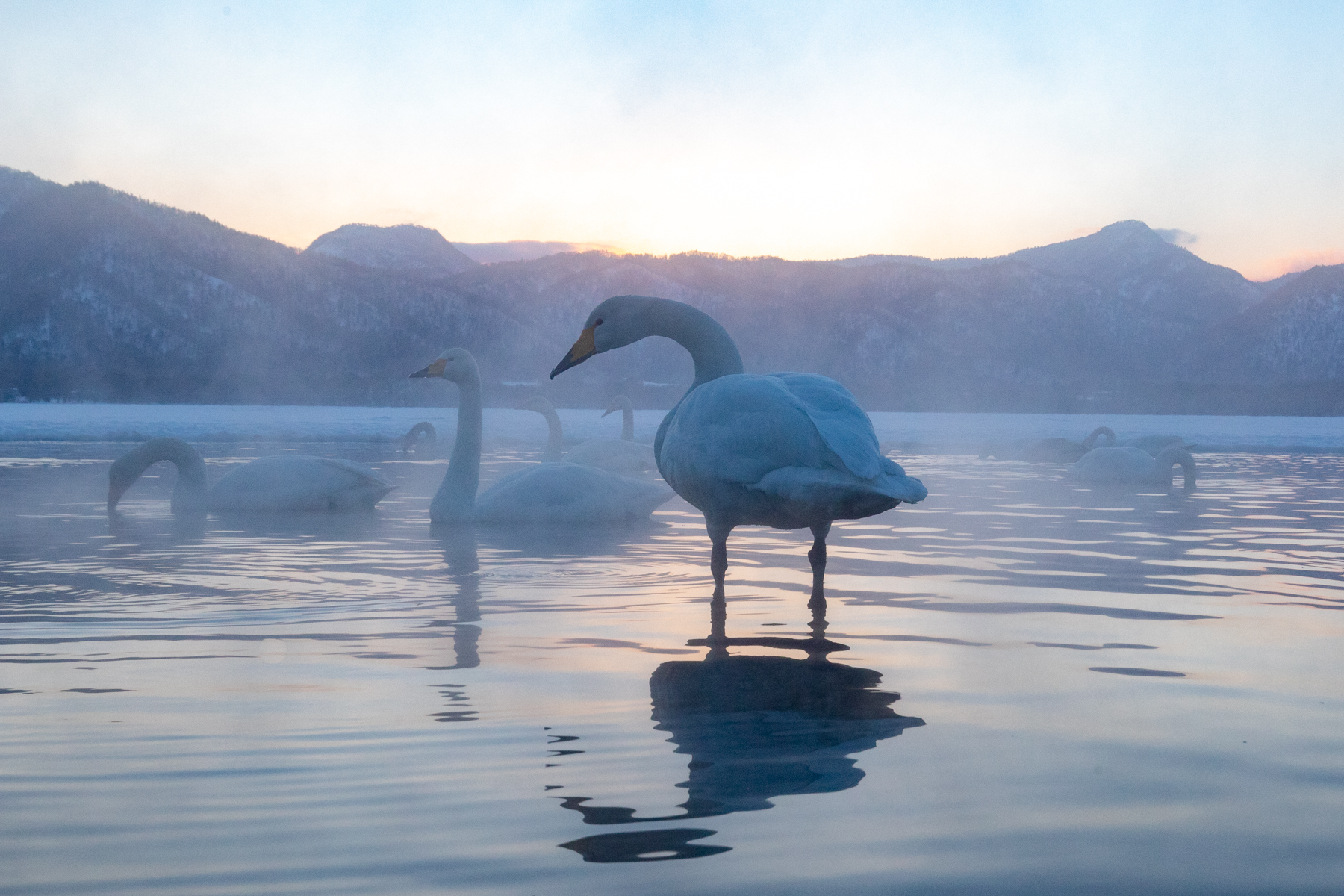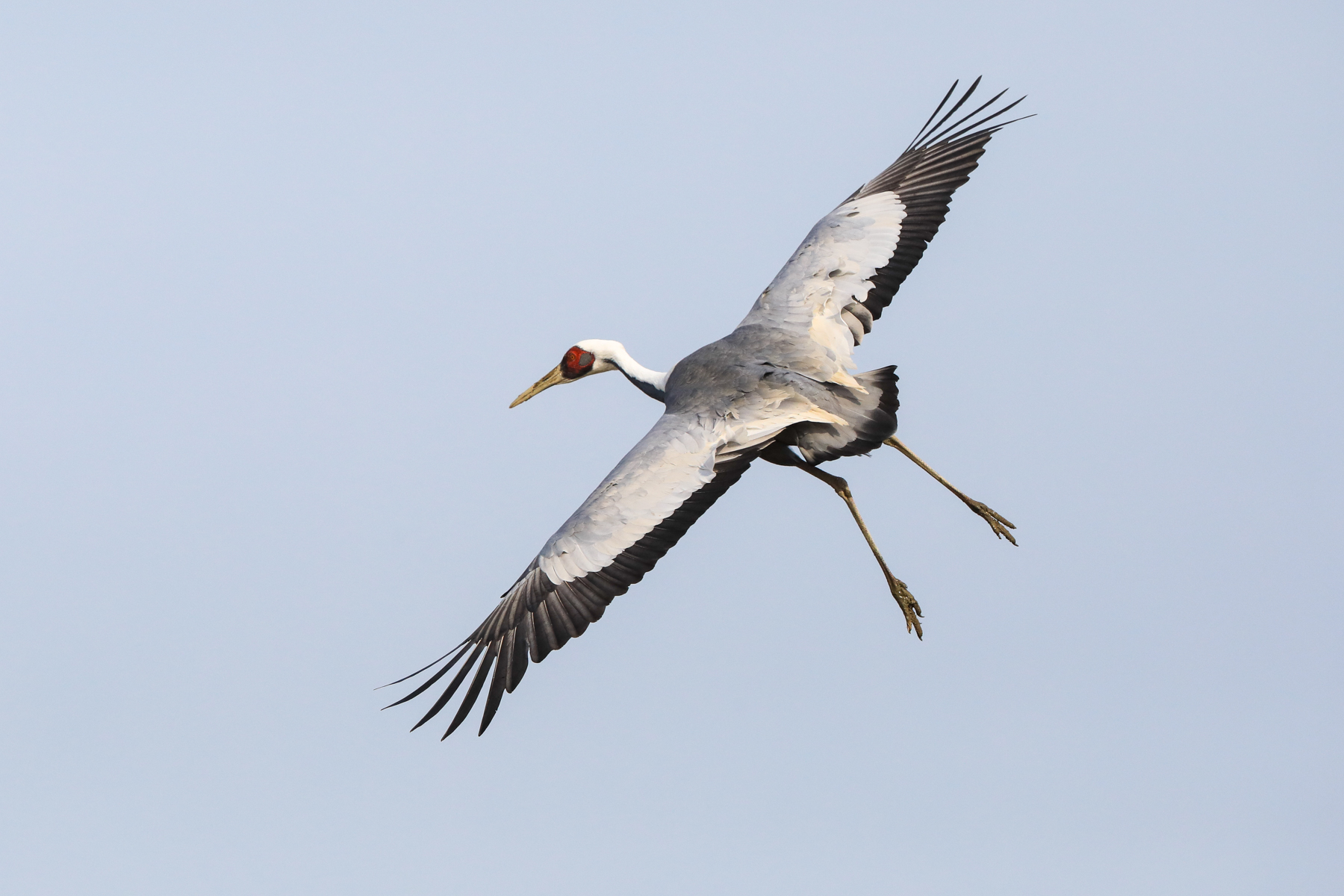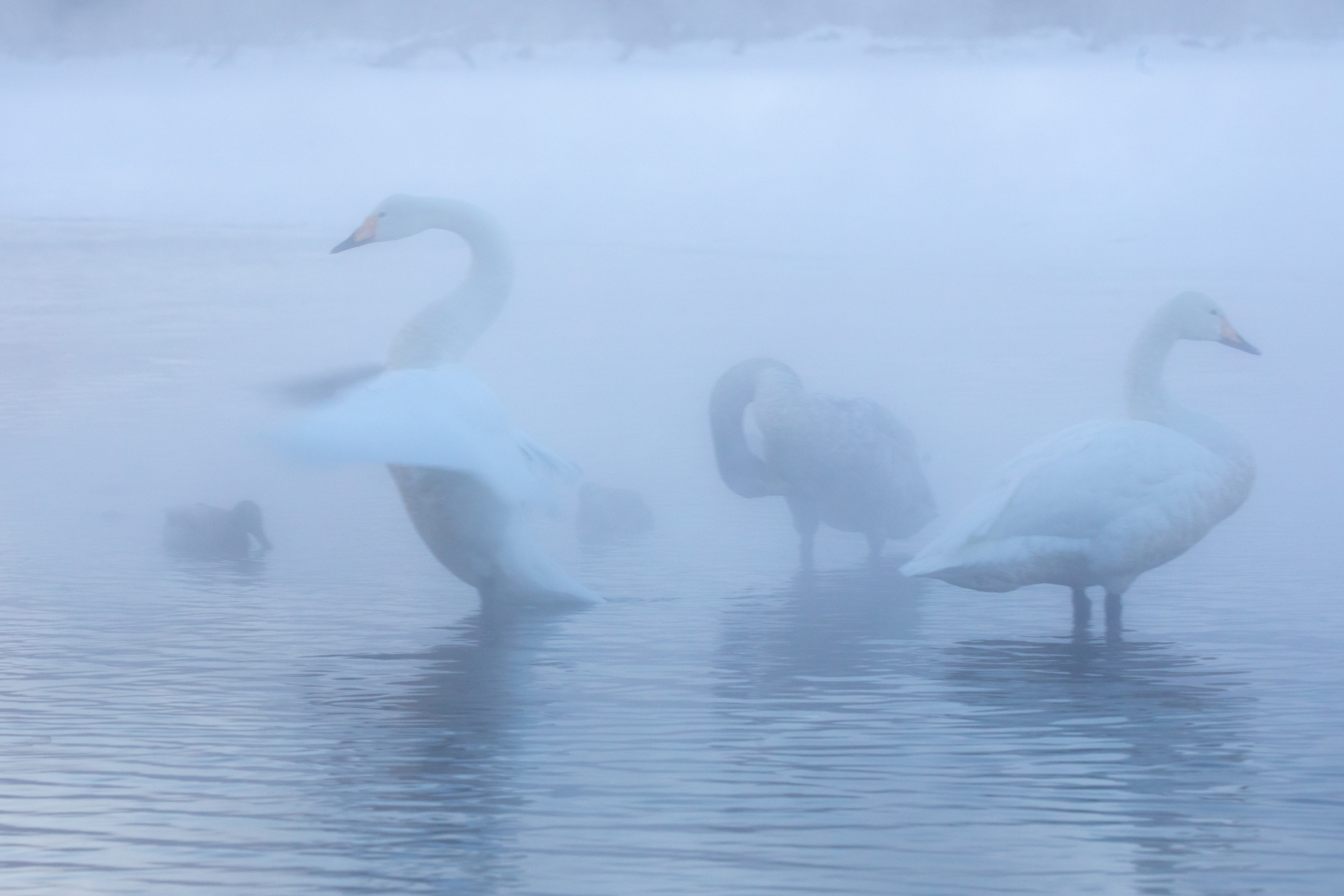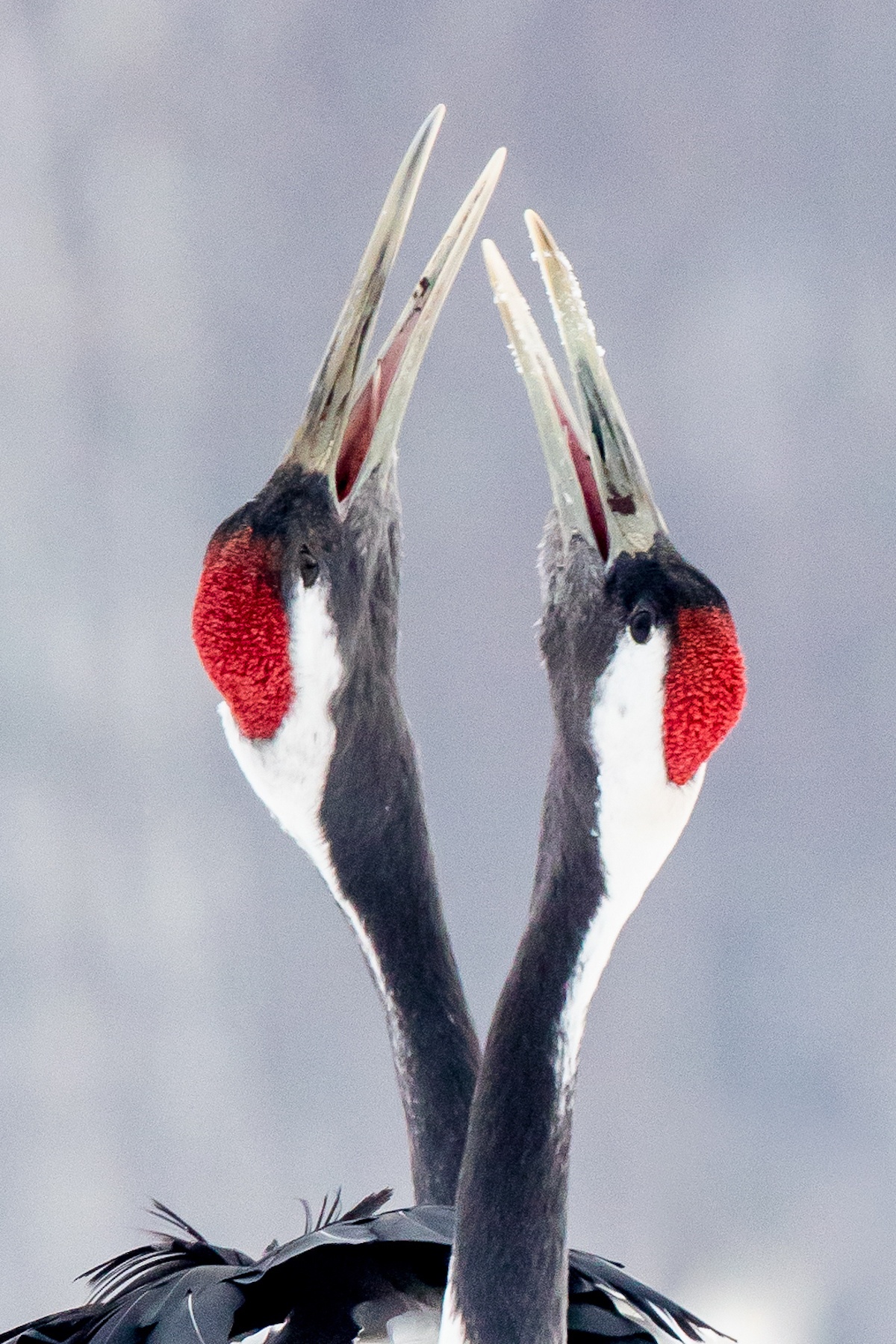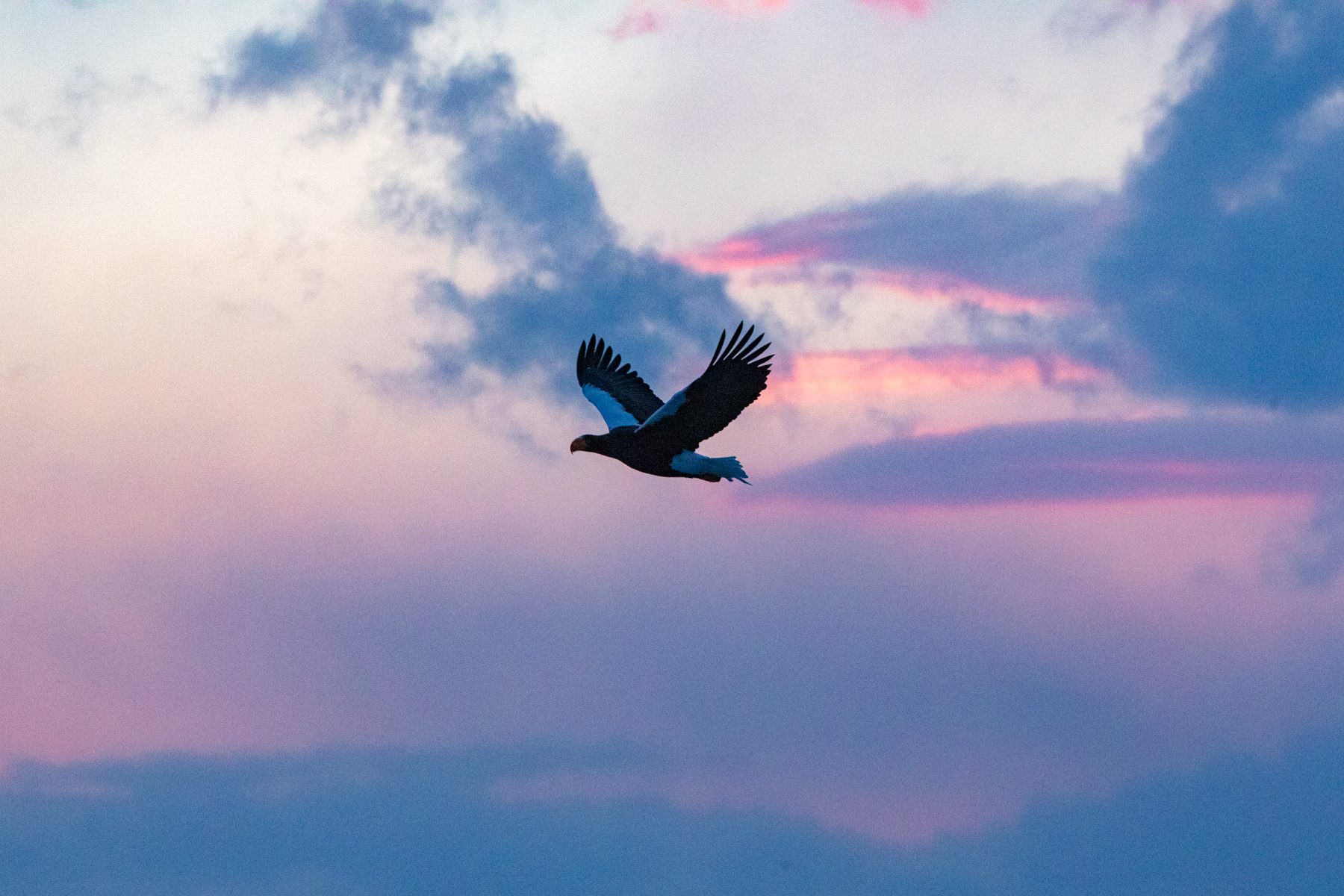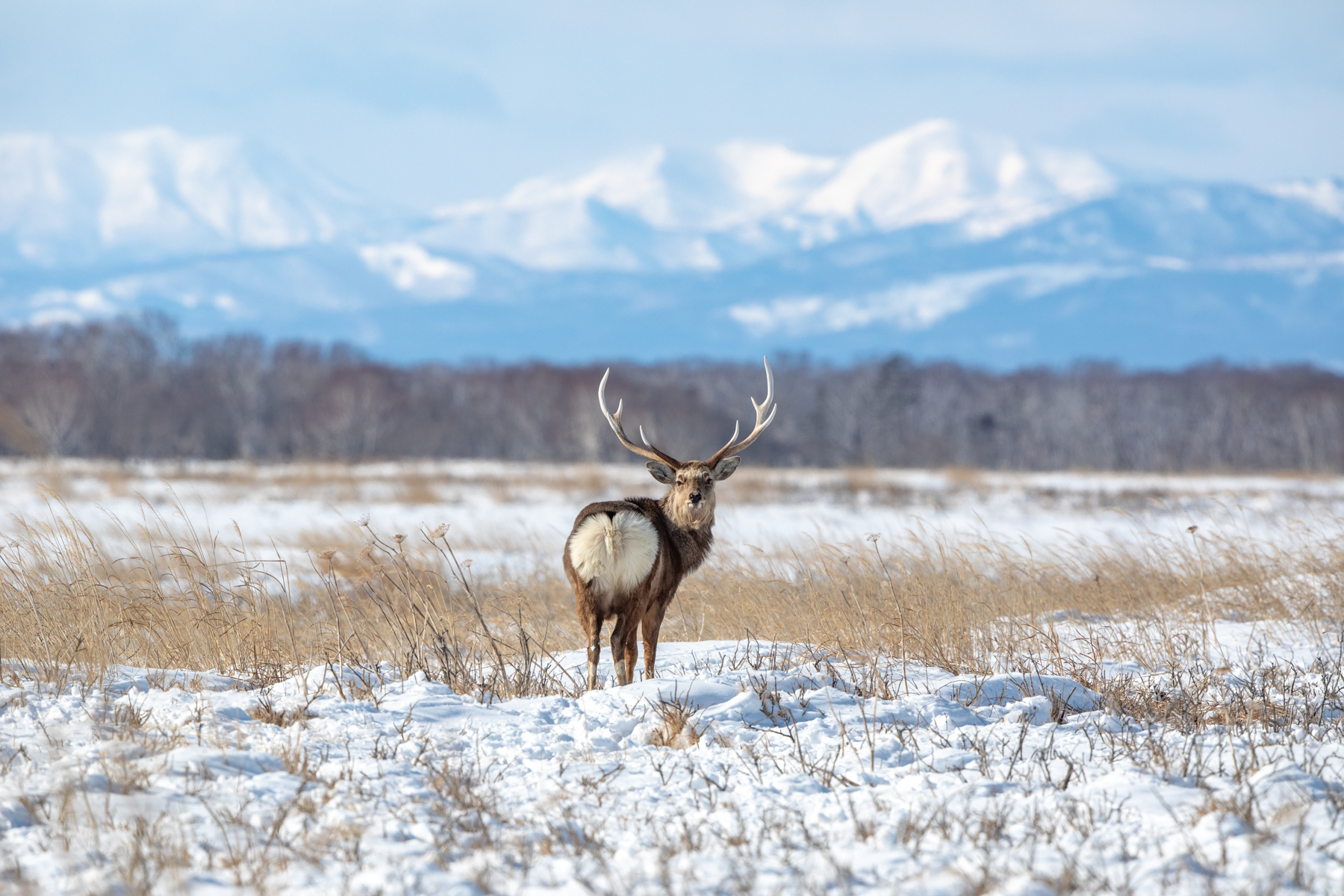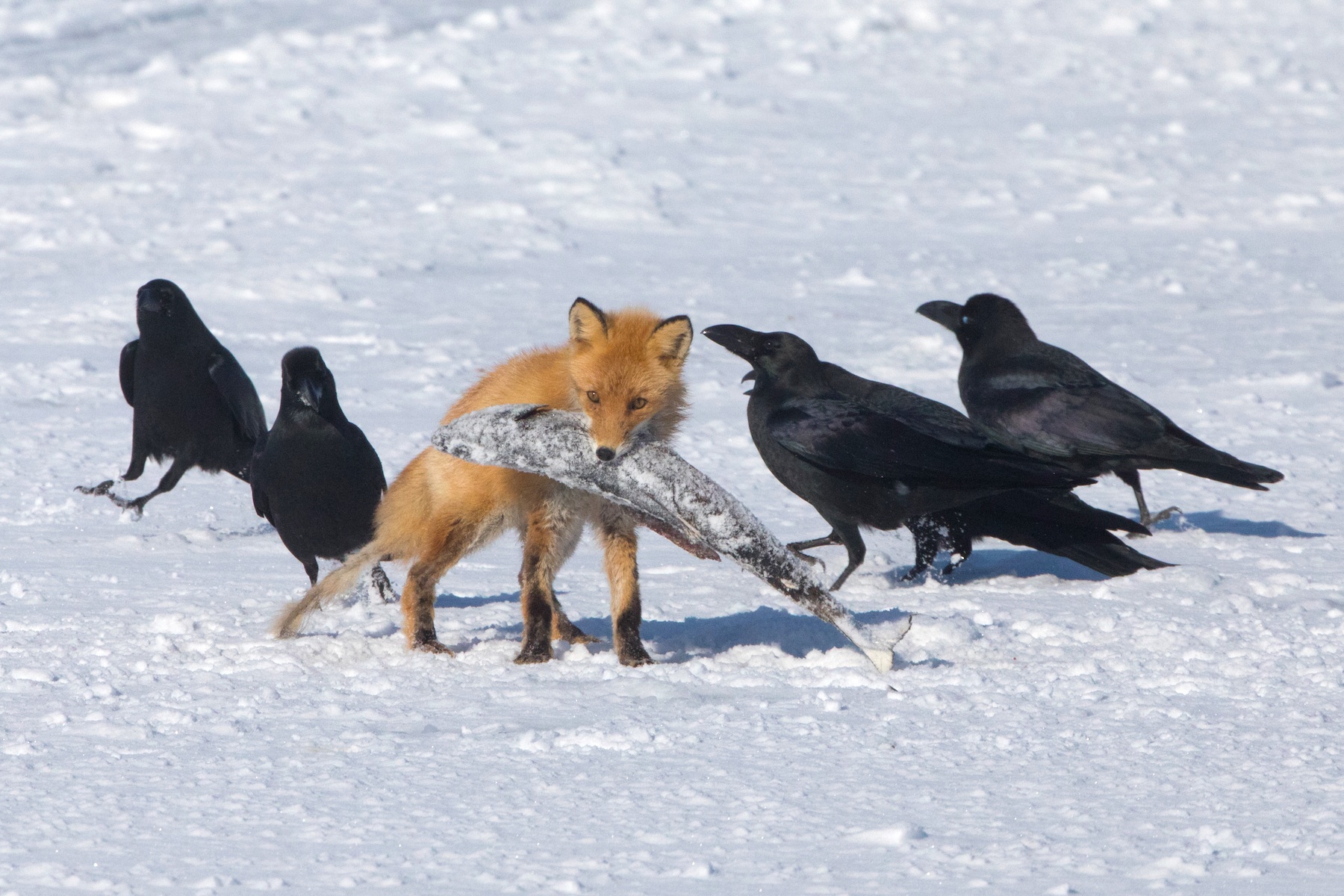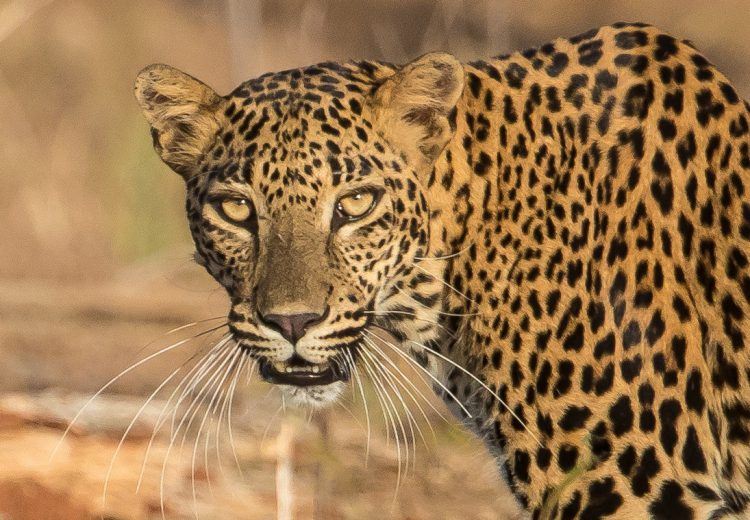Japan
JAPAN: WINTER WILDLIFE SPECTACULAR – Cranes, Eagles, Swans & Snow Monkeys
























































































































Cranes at sunrise at Arasaki (Image by Mark Beaman)

Steller's Sea Eagle amidst the ice (image by Mark Beaman)

And you thought only humans dived into the swimming bath? (image by Mark Beaman)

A Japanese Serow walking in the snow (Image by Pete Morris)

"How wonderful it is to be born a high-caste Snow Monkey and be able to visit the hot bath!" (image by Mark Beaman)

Steller's Sea Eagles in the dawn light of Hokkaido, Japan (Image by Inger Vandyke)

Portrait of a Red Fox (image by Mark Beaman)

Whooper Swan preening (image by Inger Vandyke)

Red-crowned Cranes in Hokkaido, in the style of a Japanese painting (image by Mark Beaman)

Portrait of a Red-crowned Crane, Hokkaido, Japan (Image by Inger Vandyke)

Cranes silhouetted against the pink dawn sky in Kyushu (Image by Mark Beaman)

Snow Monkeys often betray their feelings about the much larger monkeys watching and photographing them (image by Mark Beaman)

Mother and baby on the move (image by Mark Beaman)

Whooper Swans at sunset at Lake Kussharo, Hokkaido (image by Mark Beaman)

The beautiful Falcated Duck, an East Asian speciality (image by Mark Beaman)

The endangered Black-faced Spoonbill is a regular visitor at Arasaki (Image by Mark Beaman)

Young Snow Monkeys love playing in trees ands saplings (image by Mark Beaman)

A 'dynasty' of Mandarin Ducks (image by Mark Beaman)

Red-crowned Cranes leaving their atmospheric roost at Otawa in Hokkaido (image by Mark Beaman)

The volcano Rausu-dake in northern Hokkaido, Japan (image by Mark Beaman)

The dancing of the Red-crowned Cranes is one of the marvels of Hokkaido (image by Mark Beaman)

Cranes motion blur at Arasaki, Japan (image by Mark Beaman)

A backlit Snow Monkey near sunset (image by Mark Beaman)

Red-crowned Cranes at their river roost at Otawa in Hokkaido. A Red Fox is watching them from the left side (image by Mark Beaman)

Red-crowned Cranes flighting to roost (image by Mark Beaman)

Hooded Cranes motion blur at Arasaki, Kyushu (image by Mark Beaman)

Even a humble Mallard looks fantastic in Japan's winter wonderland (image by Mark Beaman)

A Whooper Swan comes in to land (image by Mark Beaman)

White-naped Cranes flying through the snow at Arasaki (Image by Mark Beaman)

It is awesome to be so close to Red-crowned Cranes, even in flight (image by Mark Beaman)

An adult White-tailed Eagle in flight is an impressive sight (image by Mark Beaman)

Snow Monkeys are good jumpers (image by Mark Beaman)

Hooded and White-naped Cranes in the snow at Arasaki , Japan (Image by Mark Beaman)

Whooper Swans in the mist at Lake Kussharo, Japan (Image by Pete Morris)

A flock of Steller's Sea Eagles at sunset in Hokkaido, Japan (Image by Pete Morris)

The enormous Blakiston's Fish Owl at Rausu in Hokkaido (image by Mark Beaman)

Snow Monkeys often huddle together for warmth in the cold winter of the Japanese Alps (image by Mark Beaman)

White-naped Cranes tower above Hooded Cranes at Arasaki (Image by Mark Beaman)

Silhouetted Red-crowned (or Japanese) Cranes in flight at sunset (Image by Pete Morris)

A Steller's Sea Eagle 'brakes' at the last moment as it dives for food (image by Mark Beaman)

Sly portrait of a Red Fox in Japan (Image by Pete Morris)

Hoar frost on an alder branch (image by Mark Beaman)

Cranes at sunrise at Arasaki on Kyushu Island (Image by Mark Beaman)

Steller's Sea Eagle with fish (image by Mark Beaman)

A young Glaucous Gull (image by Mark Beaman)

A pair of White-naped Cranes display together at Arasaki, Japan (image by Mark Beaman)

At first light the sleeping cranes at Otawa look like something out of a Japanese watercolour (Image by Mark Beaman)

Hooded Creanes in flight (image by Mark Beaman)

A dancing Red-crowned Crane hurls itself high into the air (image by Mark Beaman)

A Steller's Sea Eagle forces a White-tailed Eagle to drop a piece of fish by grabbing hold of its leg and talons! (image by Mark Beaman)

A Steller's Sea Eagle threatens a White-tailed Eagle that had the temerity to steal from its patch (Image by Inger Vandyke)

Sika Deer rutting in Hokkaido, Japan (image by Mark Beaman)

A Steller's Sea Eagle plunges down to catch a fish (image by Mark Beaman)

Steller's Sea Eagle motion blur (image by Mark Beaman)

A Steller's Sea Eagle perched in the snow (Image by Pete Morris)

A Blakiston's Fish Owl, the largest owl in the world, with its fish dinner, Hokkaido, Japan (Image by Pete Morris)

A Steller's Sea Eagle surveys its wintry domain from an upflung block of sea ice (image by Mark Beaman)

Pale Thrush is a winter visitor to Kyushu (Image by Mark Beaman)

A Black Kite inspects the crane reserve at Arasaki (Image by Mark Beaman)

Steller's Sea Eagle adult with fish (Image by Inger Vandyke)

A pair of magnificent Steller's Sea Eagles amidst the ice off Rausu, Hokkaido (image by Mark Beaman)

The beautiful Shinto shrine at Rausu (image by Mark Beaman)

White-naped Cranes in the blue light after sunset at Arasaki (Image by Mark Beaman)

Large-billed Crow study (image by Mark Beaman)

A pair of Ural Owls at their roosting tree in Hokkaido, Japan (image by Mark Beaman)

A young Steller's Sea Eagle lands on the ice (Image by Pete Morris)

A Red Fox runs through a group of Japanese Cranes (Image by Pete Morris)

Japanese Macaques (Snow Monkeys) engaged in mutual grooming in Honshu, Japan (Image by Pete Morris)

Whooper Swans displaying at Lake Kussharo, Hokkaido (image by Mark Beaman)

In winter Sika Deer often have to dig for food in the powdery snow (image by Mark Beaman)

Steller's Sea Eagle with fish (image by Mark Beaman)

As the first sunlight catches the hoar-frost-covered trees at Otawa, the steam rising from the river adds to the other-worldly scene of roosting Red-crowned Cranes, Hokkaido, Japan (Image by Mark Beaman)

Steller's sunrise (image by Mark Beaman)

A Red Fox barks to advertise its territory (image by Mark Beaman)

Beautiful Lake Kussharo in Hokkaido, Japan (image by Mark Beaman)

Trying to keep warm (Image by Pete Morris)

A Steller's Sea Eagle in flight (Image by Pete Morris)

A Blakiston's Fish Owl swoops in to catch its prey (image by Mark Beaman)

Portrait of a 'Snow Monkey', Honshu, Japan (Image by Inger Vandyke)

Misty Whooper Swan (image by Mark Beaman)

Red Fox on the prowl (image by Mark Beaman)

"How can I escape my ordained fate as a low-caste flea-groomer?" (image by Mark Beaman)

A late Whooper Swan heads for its roosting site at sunset (image by Mark Beaman)

White-naped Cranes at sunset at Arasaki (Image by Mark Beaman)

Sables are cute and mischievous creatures (Image by Inger Vandyke)

Beautiful dancing Red-crowned (or Japanese) Cranes in the snows of Hokkaido (Image by Pete Morris)

A White-naped Crane bugles as it crosses the dawn moon at Arasaki, Japan (Image by Mark Beaman)

Sika Deer on the march (image by Mark Beaman)

A stunning Northern Pintail walks out on to the ice (Image by Pete Morris)

An adult White-tailed Eagle dives for a fish (image by Mark Beaman)

Hokkaido mountain landscape (image by Mark Beaman)

Some young Snow Monkeys look like strange little forest goblins (image by Mark Beaman)

Red-crowned Crane detail (image by Mark Beaman)

Grounded sea ice in northern Hokkaido, with the Russian-occupied island of Kunashiri in the background (image by Mark Beaman)

A huge Blakiston's Fish Owl, the world's largest owl, watches from a riverside tree (image by Mark Beaman)

The soft light in Japan is perfect for landscape photography and indeed wildlife in context photography (Image by Pete Morris)

Whooper Swans in the mist (image by Mark Beaman)

A pair of Steller's Sea Eagles go head to head in Hokkaido, Japan! (Image by Pete Morris)

There are plenty of opportunities to practice motion blur shots in Japan (Image by Pete Morris)

Play fighting is a way of establishing and confirming social position in young Snow Monkeys or Japanese Macaques (image by Mark Beaman)

Whooper Swans displaying (image by Mark Beaman)

A pair of stately White-naped Cranes (Image by Mark Beaman)

Portrait of a Japanese Macaque, also known as the 'Snow Monkey' (Image by Pete Morris)

Whooper Swans at dusk at Lake Kussharo (image by Mark Beaman)

Two adult Steller's Sea Eagles battle it out for a fish in Hokkaido (image by Inger Vandyke)

An adult White-naped Crane comes in to land at Arasaki, Japan (Image by Mark Beaman)

A Blakiston's Fish Owl flies off with a fish. Rausu in Japan is the best place to photograph the world's largest owl (image by Mark Beaman)

Sometimes those Red-crowned Cranes get up close and personal... (image by Mark Beaman)

In flight clash between a Steller's Sea Eagle and a White-tailed Eagle in the snow (Image by Pete Morris)

A Snow Monkey grimaces with fear when challenged by a dominant adult (image by Mark Beaman)

Whooper Swans in the mist (image by Mark Beaman)

Displaying Red-crowned (or Japanese) Cranes in winter in Hokkaido. Cranes mate for life (Image by Inger Vandyke)

Cranes in the sunset (Image by Pete Morris)

Eagle dawn (image by Mark Beaman)

A male Sika Deer amidst Hokkaido's spectacular landscape (image by Mark Beaman)

A Red Fox prepares to make its escape with a dead fish before the Large-billed Crows can get it (Image by Inger Vandyke)

The odd man out... Hooded Cranes, and a Common Crane, at Arasaki (Image by Mark Beaman)

Adult and immature White-tailed Eagles talon-grapple as they squabble over food (image by Mark Beaman)
|
Wednesday 5th February –
Monday 17th February 2025 Leaders: Virginia Wilde and Chikara Otani |
13 Days | Group Size Limit 8 (1 space) |
|
Arasaki Cranes Extension
Sunday 2nd February – Wednesday 5th February 2025 |
4 Days | Group Size Limit 8 |
|
Thursday 5th February –
Tuesday 17th February 2026 Leaders: Chikara Otani and Wild Images leader to be announced |
13 Days | Group Size Limit 8 |
|
Arasaki Cranes Extension
Monday 2nd February – Thursday 5th February 2026 |
4 Days | Group Size Limit 8 |
JAPAN WILDLIFE PHOTOGRAPHY TOURS WITH WILD IMAGES
Spectacular is an over-used word, but the winter wonderland of Japan, including the northern island of Hokkaido, is a destination where the word really has meaning, a place where you will see extraordinary sights and surely take home many extraordinary wildlife images.
It is during the winter months that Japan really comes into its own, for then it plays host to some of the greatest wildlife spectacles on earth and this special wildlife photography tour provides the opportunity to experience the very best photography opportunities that Japan has to offer, including the beautiful Japanese Cranes dancing in the snows of Hokkaido, the famous ‘Snow Monkeys’ of Honshu, the huge Blakiston’s Fish Owl, hordes of gigantic Steller’s Sea Eagles and the wonderful Whooper Swans of Lake Kussharo.
Lying at the opposite end of the vast continent of Eurasia from the British Isles is the archipelago of islands that forms Japan. Westernized and yet profoundly Oriental, Japan remains an enigmatic land to westerners, few of whom know much about it beyond its shiny consumer exports. Stretching from the sub-tropics in the Ryukyus to the cool temperate latitudes in Hokkaido, these beautiful islands with their jagged and broken coastlines possess some of the most attractive scenery in eastern Asia.
A visit to upcountry Japan (the ‘real’ Japan) is an experience in itself and one that requires of the traveller a spirit of adventure and a willingness to adapt to new ways of doing things. Simple things like eating Japanese meals, sleeping on futons placed on tatami mats and bathing in an ‘ofuro’ (Japanese Bath) are very different from back home, but will be great fun if you are tolerant of cultural differences. The perceived difficulty of travelling around in a country where few people speak a foreign language of any kind is the main reason why relatively few non-Japanese wildlife photographers have explored the islands. The reality is that a superb travel infrastructure, spotlessly clean accommodations, interesting and beautifully-presented food and friendly, helpful people make a wildlife photography tour of Japan a thoroughly enjoyable experience.
Our Japan photography tour extension to the southern island of Kyushu adds something extra to our tour that is absent from virtually all other wildlife photography itineraries in Japan, the chance to experience and photograph the White-naped and Hooded Cranes spectacle at Arasaki. Far less well-known and famous than the Japanese (or Red-crowned) Cranes of Hokkaido, this is just as impressive a sight, with up to 15,000 ultra-tame and approachable wild cranes present in just one small area!
These days there are plenty of Japan winter wildlife photography tours being offered. All we can say is that we have an unsurpassed knowledge of wildlife photography in Japan, from Kyushu in the south to Hokkaido ion the north, which is based on visits stretching back to 1991, long, long before most photo tour companies ever set foot in the islands. Take a look at our detailed itinerary and tour notes: we think our experience in Japan speaks for itself. If you come to Japan with Wild Images, you are going to be travelling with people who really know how to get the most out of this destination for you, whatever the conditions.
Accommodation & Road Transport
The western-style or Japanese-style hotels and guesthouses are of good or at least medium standard. Road transport is by minibus/passenger van and/or car and roads are good.
Walking
The walking effort during our Japan wildlife photography tour is easy almost throughout. Indeed there is only one place (the Snow Monkey reserve at Jigokudani) where the photography requires a walk of more than 100m (100 yards) or so. At Jigokudani it is necessary to walk about 1.6 km (1 mile) from the car park to the reserve ticket office, mostly on a level, but snow-covered path.
Kindly note that when we travel between Haneda airport and the Nagano area (the Snow Monkeys area) we use the famous Japanese ‘bullet trains’. This gains us time compared to travelling by the congested roads and so enables us to have more time with the Snow Monkeys. However, you will need a wheeled main bag so you can negotiate the railway stations and there will be some escalators en route.
Climate
The weather is cool temperate zone winter conditions in the areas we visit during the main tour of our Japan wildlife photography tours. It will be cold in the Japanese Alps of Honshu and it will be cold or very cold in Hokkaido. Temperatures in the early afternoon (the warmest time) are typically from just above freezing to a few degrees below, but nighttime/early morning temperatures are typically around minus 5-10°C (14-23°F) at the Snow Monkeys and minus 5-15°C (5-23°F) in Hokkaido. It may snow at times (and snow will be lying on the ground), but the weather is predominantly dry and sunny at this season.
During the optional extension, it will be quite mild (typically 9-12°C or 48-54°F in the early afternoon, 2-6°C or 36-43°F in the nighttime/early morning) in the southern island of Kyushu. Some rain or even snow is possible.
Coping with a winter photography tour in Japan
For many people, who have never experienced a winter photography tour in the temperate zone, the prospect of a winter wildlife tour to Japan is concerning. There is, however, no need to be worried that you will be regularly ‘frozen’, providing you bring the right clothing.
Proper footwear is key, as you will be standing around for long periods, not undertaking heat-generating exercise. You need to bring good quality ‘snow boots’ (as, for example, made by Baffin) so that your feet stay warm whatever the conditions. Hiking boots or rubber boots (‘wellies’) are not going to suffice unless your feet never feel the cold!
All accommodations in Japan are well heated, as are our vehicles, so you need layers you can put on and off. In our view the best plan is to have a thermal inner layer (thermal underwear) and then two or three fleeces or equivalent on your torso, topped off with a good down jacket, while you will also need thick, winter-weight trousers/pants or down trousers/pants.
Top this off with a warm hat (beanie), a muff (to protect your neck, mouth and nose if it is windy), really good insulated gloves or mittens and a thin glove for whichever hand you control your camera with (to give some protection when that thick glove or mitten is necessarily off). You also need two layers of socks (thin and thick).
Finally, if you suffer regularly from cold feet or hands, even with this equipment you may want to buy some of the chemical hand and feet warmers that are very widely available in Japan (no need to bring these with you: we will stop for some before we reach the Snow Monkeys and in Hokkaido).
If you follow these instructions you are going to stay warm and comfortable throughout your tour, and enjoy it so much more! The only exception we can really think of are the eagle boat trips off Rausu (which are of up to 2.5 hours duration), where one’s control hand does tend to get pretty cold by mid-trip, simply because the photographic action is so frenetic and there is little time to warm up that thinly-gloved hand! There is, however, a heated cabin on the boat where one can retreat to if need be.
Photographic Equipment
If you use a DSLR or mirror-less camera for wildlife photography you should ideally bring lenses that will (with a full-frame body) cover the approximate range 100-600mm or more. Japan in winter is unusual among wildlife photography tours in that a significant number of situations do not need a lot of reach, so you will often be shooting at focal lengths (on a full frame) of between 100-300mm. We want to stress the importance of covering the shorter telephoto lengths of 100-200mm. If you come with nothing shorter than a 300mm prime you are going to be kicking yourself, a lot! On the other hand 500mm plus is going to be the norm for many crane shots and plenty of other subjects. You will also find a wide angle lens good for landscapes. There will be only limited opportunities to use a macro lens.
If you bring a good quality bridge camera (high end compact camera) it will be best if it has an optical zoom of up to 18-20x or more, combined with a reasonable wide-angle at the other end of the zoom range.
Be sure to bring plenty of spare battery power: cold weather can be an issue with batteries, which tend to discharge faster than in warmer temperatures. In addition, you are likely to take far, far more images in Japan than you expect (it truly is an amazing place for good wildlife subjects), so bring lots of memory cards! Fill-flash is possible with the Snow Monkeys if the light is dim, but please use it sparingly, for the sake of both the monkeys and other photographers.
If you would like to talk over suitable equipment, please contact our office. We will be happy to advise.
VIEW OUR GUEST’S PHOTOS
Japan offers a wonderful array of charismatic birds (the wonderful red-crowned crane, the largest owl in the world, the largest eagle in the world, among others), as well as the large and impressive Sika deer, nearly tame red fox, and the wonderful snow monkey all in a winter wonderland. Additionally, the country is neat, clean, and safe with an interesting and unique culture. Go! …preferably with Wild Images! – Jacqui Burke (guest on our 2023 Japan tour). To view a gallery of Jacqui’s beautiful images from our tour click here.
Photographic Highlights
- The incomparable ‘Snow Monkeys’ (Japanese Macaques) of Nagano
- Awesomely beautiful Red-crowned (or Japanese) Cranes on Hokkaido, often dancing and displaying in the snow
- Up close and personal experiences with huge Steller's Sea-Eagles and their smaller relative, the White-tailed Eagle on ice and elsewhere
- Wonderful opportunities to photograph the world's largest owl, Blakiston's Fish Owl, and a good chance for Ural Owl
- Whooper Swans amongst the snow, ice and geothermal steam of a beautiful lake
- Photogenic Red Foxes, likely including one or more that are extraordinarily fearless and approach very closely
- Handsome Sika Deer, often with snowy mountain or other attractive backdrops
- Cheeky, delightful Sables (a kind of marten) just outside one of our accommodations, alongside close-up jays, woodpeckers, nuthatches and tits
- Beautiful ducks, including Harlequin Duck, at fairly close range
- The huge concentrations of beautiful White-naped Cranes and Hooded Cranes at Arasaki
- A strange creature that belongs in fairy tales, the Japanese Serow, comes to life in the forests of the Japanese Alps
- The famous Otawa Bridge crane roost at dawn where we will hope for some early morning mist or, better still, a rare hoar frost
- The beautiful snowy winter landscape of Hokkaido is like travelling through a work of art
- The exquisite and delicious Japanese cuisine is an experience in itself and is almost too beautifully presented to spoil by eating it
- Have fun immersing yourself in the delightful Japanese culture by visiting an onsen (thermal bath) and wearing traditional dress to evening meal
- Speed from the world’s largest metropolitan area of Tokyo to the snowy Japanese Alps on a shinkansen (bullet train)
OUTLINE ITINERARY
- ARASAKI CRANES EXTENSION
- Day 1: Arrive at Tokyo Haneda where we will take a morning flight to Kagoshima on the island of Kyushu. Afternoon at the crane reserve in Arasaki
- Day 2: Full day of photographing the cranes at Arasaki
- Day 3: After a final morning of photographing the cranes at Arasaki we will fly back to Tokyo for an overnight stay at a hotel near the airport
- Day 4: Today the extension will end and the main tour will begin
- JAPAN: WINTER WILDLIFE SPECTACULAR
- Day 1: Our tour will start with a morning arrival in Tokyo. We will travel by bullet train to Nagano
- Days 2-3: Two full days of photograhing the delightful Japanese Macaques at Jigokudani Yaen-Koen Wild Monkey Park
- Day 4: We will return to Tokyo in time for our flight to Kushiro in Hokkaido. First afternoon of photography with the Red-Crowned Cranes
- Days 5-6: Two full days of photographing the Red-crowned Cranes at Tsurui and Akan
- Day 7: Drive to Lake Kussharo and spend the rest of the day photographing Whooper Swans at the lake
- Day 8: Final morning of photography at Kussharo and drive to Rausu
- Days 9-11: Three days of photographing White-tailed and Steller's Eagles and Blakiston's Fish Owl
- Day 12: Travel from Rausu to Nakashibetsu to photograph the wildlife in the vicinity of the lodge
- Day 13: Final morning of photography at Nakashibetsu and drive to Kushiro Airport for flight to Tokyo where our tour will end
To see a larger map, click on the square-like ‘enlarge’ icon in the upper right of the map box.
To see (or hide) the ‘map legend’, click on the icon with an arrow in the upper left of the map box.
To change to a satellite view, which is great for seeing the physical terrain (and for seeing really fine details by repetitive use of the + button), click on the square ‘map view’ icon in the lower left corner of the ‘map legend’.
PRICE INFORMATION
Wild Images Inclusions: Our tour prices include surface transportation, accommodations, meals and entrance fees.
Our tour prices also include these flights: Tokyo-Kagoshima-Tokyo and Tokyo-Kushiro-Tokyo.
Tipping is not customary in Japan.
Deposit: 20% of the total tour price. Our office will let you know what deposit amount is due, in order to confirm your booking, following receipt of your online booking form.
TO BOOK THIS TOUR: Click here (you will need the tour dates)
2025: confirmed £4380, $5730, €5270, AUD8650, JPY860000. Tokyo/Tokyo.
Arasaki Cranes Extension: £1220, $1600, €1470, AUD2410, JPY240000. Tokyo/Tokyo.
2026: provisional £4430, $5800, €5330, AUD8750, JPY870000. Tokyo/Tokyo.
Arasaki Cranes Extension: £1220, $1600, €1470, AUD2410, JPY240000. Tokyo/Tokyo.
Single Supplement: 2025: £380, $500, €460, AUD760, JPY76000.
Arasaki Cranes Extension: £50, $60, €60, AUD100, JPY10000.
Single Supplement: 2026: £380, $500, €460, AUD760, JPY76000.
Arasaki Cranes Extension: £50, $60, €60, AUD100, JPY10000.
If you are travelling alone, the single supplement will not apply if you are willing to share a room and there is a room-mate of the same sex available.This tour is priced in Japanese Yen. Amounts shown in other currencies are indicative.
Air Travel To & From The Tour: Our in-house IATA ticket agency will be pleased to arrange your air travel on request, or you may arrange this yourself if you prefer.
JAPAN: WINTER WILDLIFE SPECTACULAR PHOTOGRAPHY TOUR: DETAILED ITINERARY
Day 1
Our Japan wildlife photography tour begins early this morning at the Royal Park Hotel at the International Terminal at Haneda Airport in Tokyo (where those joining the main tour will join up with those taking the optional extension).
From Tokyo, we will travel by ‘bullet train’ to the city of Nagano and then drive to Yudanaka, situated in the beautiful Japanese Alps just a 10-minute drive from the start of the Jigokudani trail, for a three nights stay. By using the train, which is much faster than travelling by road, we will be able to enjoy an afternoon session with the famous ‘Snow Monkeys’.
For those not taking the tour extension, there are international flights into Haneda arriving early this morning, in time for the tour start, or on request we can book you into the same hotel at the airport as the extension party if you are arriving the previous day.
Days 2-3
We will spend all of our time in and around the Jigokudani Yaen-Koen Wild Monkey Park. Although Jigokudani translates as Hell’s Valley (no doubt because of the geothermal activity), it is anything but. In this season the land is largely snow-covered, and against a dramatic backdrop we will have great fun photographing the magical ‘Snow Monkeys’. Made famous by numerous television documentaries and magazine articles, the Japanese Macaques (commonly referred to as ‘Snow Monkeys’) here are both bold and entertaining! With their thick winter coats covered in snow and ice, they squabble and chase each other over the rocky, snow-covered hillsides, perhaps pausing to climb up and play on an unattended tripod before dipping into their natural, thermally-heated ‘hot tub’ for a steamy soak! Up to a hundred or more macaques visit this incredibly scenic site and the whole experience of being amongst these charismatic primates is quite exhilarating!
The monkeys are so used to people that they allow a very close approach indeed. At any one time, only a small percentage are using the hot spring pool. Most are feeding, cuddling up for warmth, enjoying mutual grooming, looking after their babies (or carrying them on their backs), playing (especially the youngsters), warming themselves on the hot water pipes that go to the spas downstream or, occasionally, fighting or mating.
Needless to say, this is one of Japan’s truly great wildlife photography spectacles and we can expect to take far too many images before settling down to photograph the more memorable and interesting ‘snow monkey’ behaviour.
Sometimes one or more Japanese Serow (a kind of ‘goat-antelope’) appear on the brushy slope directly above the monkeys, making for an interesting photographic subject.
Just downstream from the ‘monkey park’ is a small spa (onsen), with a belching fumarole that produces a very photogenic steam cloud in the narrow valley. Here we will take lunch and guests can, if they wish (for a reasonable charge), take a dip in the outdoor ‘ofuro’ (Japanese Bath), quite possibly with some Snow Monkeys!
Day 4
This morning we will return to Haneda airport in Tokyo and take a flight to Kushiro airport on the northern island of Hokkaido. It is just a short drive to our hotel, where we will spend three nights. If flight timings allow we will have our first encounter with the stunning Red-crowned Cranes of Hokkaido late this afternoon.
Days 5-6
Our main priority during our stay in the Kushiro region will be photographing the magnificent Red-crowned (or Japanese) Cranes, which in the winter months are concentrated in the complex of snow-covered fields and marshlands to the north of Kushiro.
We will spend much of our time at two feeding stations, one at Tsurui and one at Akan.
By mid-morning a large flock, generally of over 100 birds (sometimes 200 or more), gathers at Tsurui, where they are regularly fed. At this season the Red-crowned (or Japanese) Cranes are dancing frequently, and as one pair begins its courtship dance the infection spreads through the flock like a wave, sometimes until dozens of striking black and white birds are leaping into the air or throwing back their heads and bugling towards heaven. It is a thrilling spectacle, and as we photograph this wonder of nature we will truly appreciate why we have come all the way to this remote corner of Japan. This is definitely one of the world’s greatest wildlife photography spectacles!
There are also opportunities here for head (and feet) close-ups, birds bugling with steam coming from their bills, flight shots (against both snowy and dark woodland backgrounds), fighting and other interactions.
The Akan feeding station, which also attracts between 100-200 cranes, offers further fantastic opportunities for crane photography, but with subtle differences. The feeding of fish to the cranes ceased here after 2016, supposedly over worries about bird flu, so the interactions between cranes and Red Foxes or White-tailed Eagles that were also attracted to the fish are now history, but the grain feed still attracts Whooper Swans, which are sometimes scared off by the exasperated reserve staff, but which offer more great photographic opportunities both in flight against the sky or snowy hills, or when on the ground.
Providing we have sunny conditions (it is not nearly as good an experience if it is cloudy), we shall spend at least one early morning at a river bridge where many of the cranes roost, hoping it is cold enough to create ideal conditions for some truly memorable photography. As steam rises from the river and the soft pink early morning light illuminates the scene, the cranes slowly wake up and begin bugling, the thick hoar frost on the riverside trees adding to the romantic atmosphere. Once the temperature creeps up, the cranes leave their roost and move off to feed, allowing for some great flight shots if the sky is blue and the trees frosty.
There is usually a roosting Ural Owl somewhere in the general area, so if there is one currently accessible we will surely go and photograph this Saturnine-faced species.
Day 7
Today we will drive the short distance further north to beautiful Lake Kussharo for an overnight stay at a small and very pleasant Japanese guesthouse with western-style rooms. We will either spend the whole day at Kussharo or have much of the day there following a final morning session with the cranes, should we need to.
For wildlife photographers, the prime attraction here at this very scenic frozen lake, which is surrounded by snow-covered mountains, are the many Whooper Swans that migrate to Hokkaido, and especially Lake Kussharo, every autumn from their breeding areas in Siberia and Mongolia. Small parts of the lake are kept ice-free by geothermal activity and the swans not only have only a limited expanse of open water to swim around in, but are also fed by visitors, something that has made them very tame and approachable.
The combination of ice and snow, and sometimes falling snow, as well as steam rising from the water in the early morning, makes for some wonderful wildlife photography opportunities. The swans can be captured on the water, or on the ice, or while flying in to land, and the warm pink glow around sunrise and sunset adds to the many possibilities. Northern Pintails are also often here, adding to the photography interest.
One of the guesthouses in the area has bird feeders, so if we stay there (which is not possible every tour) we can watch White-backed, Great Spotted and Japanese Pygmy Woodpeckers visit, as well as tits, nuthatches and Hawfinches. Even Raccoon Dogs may turn up in the evening!
Day 8
After spending the morning at Lake Kussharo, we will continue our journey through eastern Hokkaido to the small port town of Rausu, situated at the base of the Shiretoku peninsula on the northeast (Sea of Okhotsk) coast, for a four nights stay. We will make a stop along the way at Mount Iozan, an active volcano where the sulphur vents and fumaroles, combined with the snowy mountain scenery, make for some spectacular images.
Days 9-11
During our time at Rausu, we will have two main photographic objectives, namely the amazing Steller’s Sea Eagles and White-tailed Eagles, and the awesome Blakiston’s Fish Owl. Most of the eagles here are winter visitors from eastern Siberia, but some of the White-tailed Eagles are Hokkaido residents. Blakiston’s Fish Owl, the world’s largest owl, is resident in the Russian Far East, adjacent China and Korea, and Japan, but the only place in its range where seeing and photographing them is a practical proposition is Hokkaido.
Although conditions vary from year to year (and indeed even from day to day) there is usually some sea-ice close to Rausu in mid-February. Weather conditions permitting, we will take a total of three or four boat trips out from the Rausu harbour, each lasting up to 2.5 hours, for what has to be one of the most amazing adventures any wildlife photographer can participate in!
Setting off while it is still almost dark (on the early morning boat trip: we will also be going out at about 0900), we will soon be accompanied by hordes of gulls as we head over to the pack-ice on a boat laden with fish treats for our avian friends. Soon some bigger shapes appear, and as the sun rises we will be surrounded by big White-tailed Eagles and veritably enormous Steller’s Sea-Eagles! Over the next couple of hours, we will be totally awestruck, watching dozens of these giant eagles diving down to pick up fish from the water, catching and eating fish on the ice, squabbling over possession, or wheeling overhead, often just a few metres away, with sea ice and/or towering snow-covered peaks as a backdrop. We will get sunrise shots, action shots, flight shots (against the sunrise or the snowy mountains of the Shiretoko Peninsula) and extreme close-ups of the eagles! It really is a once-in-a-lifetime experience!
If there is no sea ice in the area, the boats still go out, but then the eagles get fed on the harbour wall and in one of the bays instead, which is still great for ultra-close eagle photography, but not as good as when there is drift ice around.
The eagles are not the only wildlife around and we may also see some impressive Largha Seals hauled out on the ice, and rarely Orcas (Killer Whales) put in an appearance. There will also be good chances for photography of Glaucous, Glaucous-winged and Slaty-backed Gulls, and Large-billed Crows (which fly out from the mainland to steal the eagle’s food!) at close quarters. We are also likely to find some approachable ducks in the harbours or elsewhere along the coastline, including beautiful Harlequin and Long-tailed Ducks, Greater Scaups, Black Scoters, Common Goldeneyes and Common Mergansers.
On one of our evenings, we will visit a small minshuku (Japanese-style guesthouse) adjacent to a small river where the incredible Blakiston’s Fish Owl comes to fish and where we should have good opportunities to photograph this giant owl fishing at down to about 12 metres (roughly 40ft) range! The owners of the minshuku put out small fish for them at a floodlit pond, and it usually does not take too long before this huge owl puts in an appearance, gliding down to the edge of the pond, hopping into the water and grabbing fish! The male owl regularly comes to the pond, sometimes joined by the female (who may already be incubating) and the birds often make several visits during the course of the night, making for some exhilarating photography. On occasion one may have to wait until midnight or later before an owl appears.
The river is also home to Brown Dippers, which are approachable and often offer good photographic opportunities as they fish from the icy margins.
Not far away to the south is the Notsuke Peninsula, a low-lying hook of land projecting into the entrance to the Sea of Okhotsk. This is a great place to photograph Red Foxes, and we are likely to come across at least one very approachable individual that could come to within a few metres!
Another prime target at Notsuke is the handsome Sika Deer and, providing it is clear and sunny, we should get some great shots of males with impressive antlers and with the snow-covered peaks of the Shiretoku in the background. Alternatively, there might be images of deer with snowflakes! Short-eared Owl is another species we may be able to photograph in this rewarding area.
On one morning we will set off early in order to visit an eagle feeding station at Lake Furen near the easternmost tip of Hokkaido, where Steller’s Sea Eagles and White-tailed Eagles can be photographed flying in, sitting around on the frozen lake and squabbling over the feast. Black Kites can also be photographed as they swoop in early in the feeding period to snatch titbits before too many eagles turn up. The feeding station is very good for clashes between eagles over food, as the partly frozen chunks of fish are initially too large for the eagles to carry off, making for some exciting interactions. In particular, the very impressive threat displays made by dominant individual Steller’s Sea Eagles, with the birds hunching their shoulders, lowering their heads, raising their tails and walking menacingly towards their rivals with wings outstretched and bowed, are something one does not witness on the sea ice.
Note that the weather conditions on the northeast coast of Hokkaido are rather changeable in winter, with a lot of snow and bad visibility at times, so we have allowed plenty of time in the area to allow for some inclement weather and still have time to achieve our goals. A short visit here is more risky weather-wise and also reduces your chances of having accessible sea ice.
Day 12
After a final morning in the Rausu region, we will head for the Nakashibetsu area where we will spend the final night of the tour at a really lovely hotel, complete with onsen (Japanese spa bath) and an impressively beautiful Japanese dinner.
We will have another chance to photograph Blakiston’s Fish Owl here (often at less than five metres or 16 feet distance!), although the lighting is not as strong as at Rausu, and photography is done through high-quality glass, so action photos require high ISO.
Also of interest for us are the superb, sandy-coloured Sables (martens) that emerge from under the hotel’s decking and run about the area, cramming themselves into bird feeders, jumping onto trees and walls, and generally being cheeky and endearing at the same time. You can photograph them at one or two metres at times! (Most winters Sables are present here, but not every single winter.)
Other good photographic subjects can include very close Eurasian Red Squirrels, Eurasian Jays, Great Spotted Woodpeckers, Brown-eared Bulbuls, Eurasian Nuthatches and Coal, Marsh, Willow and Japanese Tits. The local river is home to Crested Kingfishers and Brown Dippers and even attracts Solitary Snipe, although this unusual bird is not always present.
Day 13
After a final opportunity to admire and photograph the wildlife around our hotel, we will return to Kushiro airport, perhaps with a final visit to the cranes en route, and catch an evening flight to Tokyo (Haneda) airport, where our Japan winter wildlife photography tour comes to an end.
There are international flights out of Haneda departing later this evening or after midnight, or we can book you into a hotel near the airport if you are departing the following day.
ARASAKI CRANES EXTENSION ITINERARY
Day 1
The Japan wildlife photography tour extension begins at Tokyo (Haneda) Airport with a morning flight to Kagoshima on the southern island of Kyushu. From here we will proceed to the town of Izumi for a two nights stay. We will spend the afternoon exploring the nearby Arasaki area including the famous crane reserve.
There are international flights into Haneda arriving early this morning, in time for the tour start, or we can book you into a hotel near the airport if you are arriving the previous day.
Day 2
The fallow rice paddies around Arasaki are the site of one of the largest winter gatherings of cranes in all of Asia. Depending on the winter, up to 10,000-12,000 Hooded Cranes are to be found in the area, in addition to up to 3,500 superbly elegant White-naped Cranes, making for one of the world’s greatest wildlife spectacles. Indeed, the great majority of the surviving populations of these beautiful but endangered birds winter around Arasaki.
During our explorations in and around the reserve, we shall enjoy some wonderful close-up photography encounters with the cranes, especially when large numbers gather directly outside the guesthouse in which we will be staying in the very heart of the reserve, or at another feeding station not far away. Here they come to feed on the large quantities of grain put out for them by the reserve staff.
During this season there is constant activity as small groups of cranes, often still in family groups, bugle energetically or dance into the air. Others form flocks and fly off, trumpeting loudly as they circle upwards before moving away to feed in the surrounding rice fields. There are great opportunities for flight shots, including at sunrise and sunset, as well as amazing close-up photography opportunities and flock shots. The White-naped Cranes will have started to dance, so look out for this spectacular display.
We will also be on the lookout for a few Common and Sandhill Cranes that usually winter here, and we could even come across a wandering Demoiselle or Siberian Crane.
Arasaki is a good place to get great flight shots of Black Kites and some of the wintering ducks and gulls also allow a close approach. There are also opportunities to photograph the endangered Black-faced Spoonbill and passerines such as Pale and Dusky Thrushes, Daurian Redstart, Meadow Bunting and the huge-billed Japanese Grosbeak.
Day 3
After spending much of the morning photographing the cranes and other birds of Arasaki, we will return to Kagoshima airport and catch a mid-afternoon flight to Tokyo’s Haneda airport. We will stay overnight at a hotel near the airport.
Day 4
This morning we meet up with those arriving for the main tour. (This is Day 1 of the main tour.)
Japan: Winter Wildlife Spectacular Tour Report 2023
It’s still dark when we arrive at the spot by the river, winding through the silent forests of Hokkaido; landscapes frozen deep beneath heavy snow. The Wild Images group is buoyant, despite the bone-cold temperatures. But I’m dreaming of hot coffee, of warmth in my toes. Yet, as the first rays of sun percolate through […]
View Report
Japan: Winter Wildlife Spectacular Tour Report 2020
by Mike Watson
Wild Images’s sixth winter visit to Japan, as usual, featured some of its most iconic wildlife spectacles. Iconic is generally an overused word these days but our encounters with Japan’s wildlife were again definitely worthy of the term. The main tour featured the famous Snow Monkeys of Nagano, in the Japanese Alps, combined with the […]
View Report
Japan Winter Wildlife Spectacular: Photography Tour Report 2019
by Mark Beaman
Our February 2019 Japan Winter Wildlife Spectacular photography tour kicked off with a flight southwards from Tokyo to the southernmost main island of Japan, Kyushu. As our plane approached Kagoshima we could see the smoking volcanoes that surround the city and also the complete lack of snow that is typical of the mild winters so […]
View Report
Other Wild Images Tours featuring islands
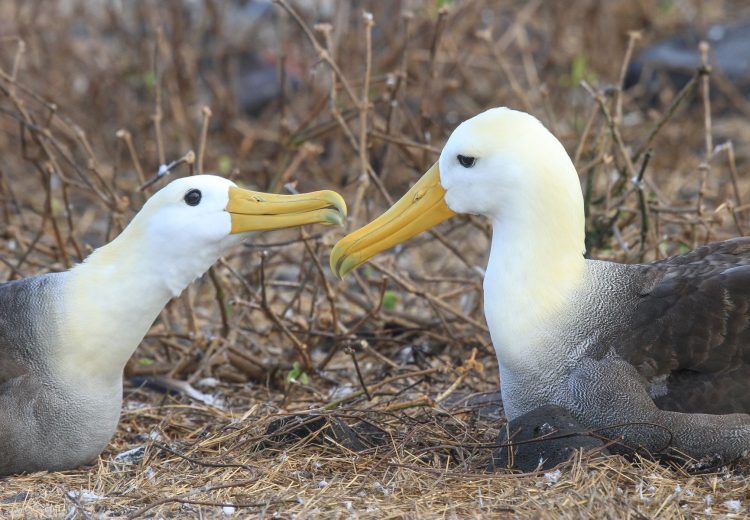
South America (including Galapagos)
May 2025
GALAPAGOS ISLANDS: Extraordinary wildlife photography in the footsteps of Darwin
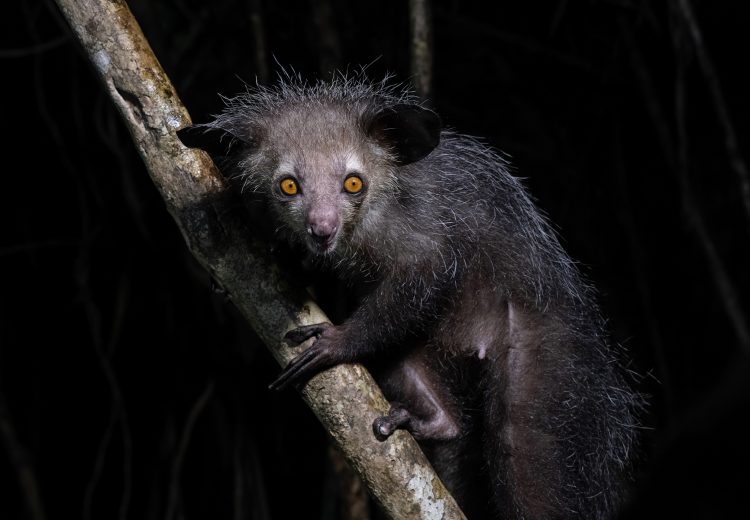
Madagascar
October 2025





